An academic team of the postgraduate programme of Hasselt University “Building Beyond Borders” along with BC architects & studies designed and built Women’s House of Ouled Merzoug in Marocco, a welcoming “home” for the women of Ouled Merzoug that was developed as an end result of a participatory process between skilled local workers and foreign architects, a sustainable home, as well, which was build with local and regenerative materials, on the one hand, using a mixture of traditional and contemporary building techniques, on the other.
-text by the authors
On November 2013 BC architects & studies left on a fieldwork mission to the small village of Ouled Merzoug in the rural province of Drâa- Tafilalet in Marocco. This visit had as a goal to prospect the bioclimatic design and local materials construction of a preschool. It was the start of a long journey between the villagers and the BC team and others, with workshops, researches, and exchanges between artists, craftsman, students and architects from Europe and Africa. One of the main themes of this journey was “how to move forward as a society using the vast common resources of traditions and local materials”.
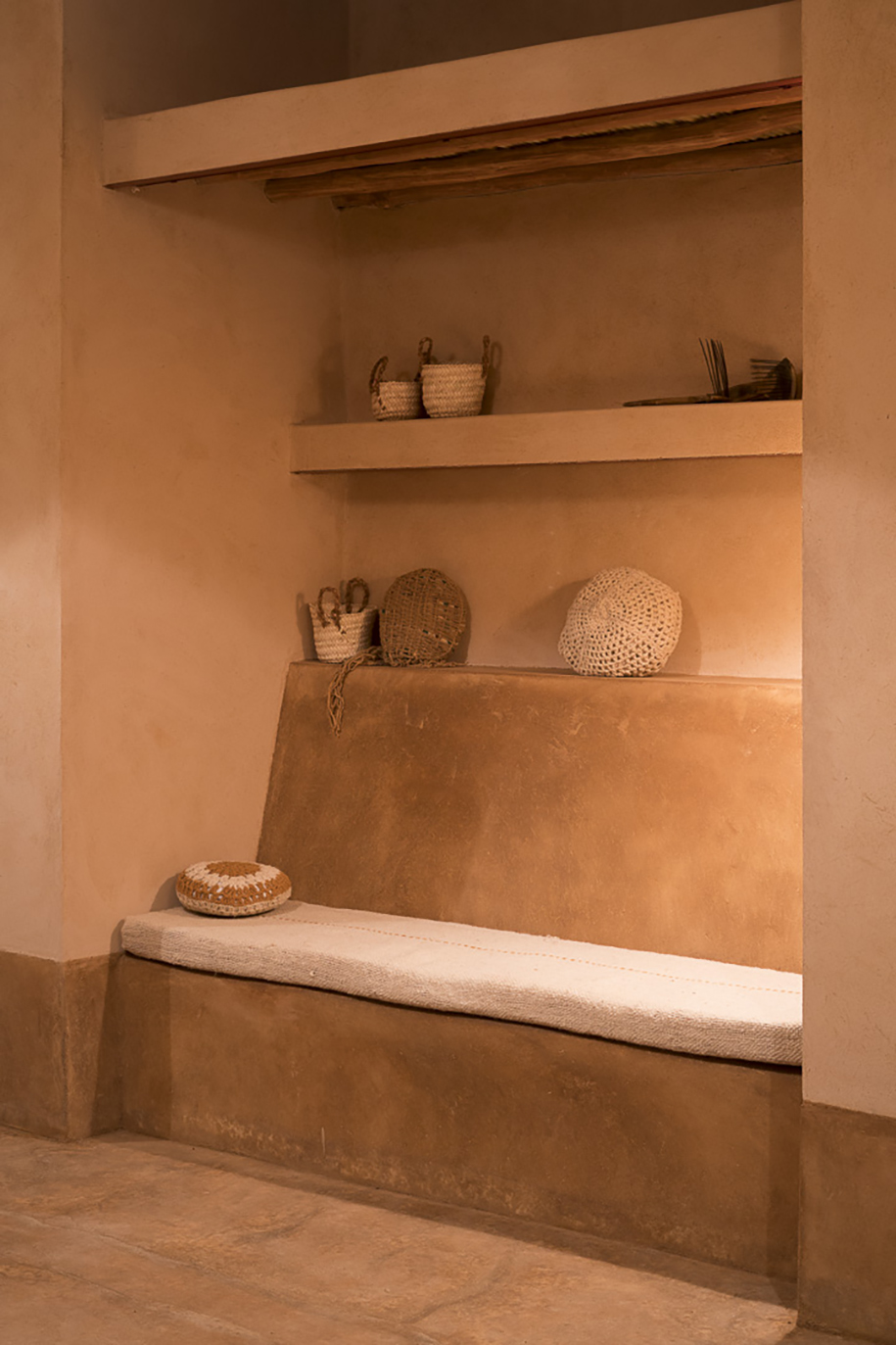
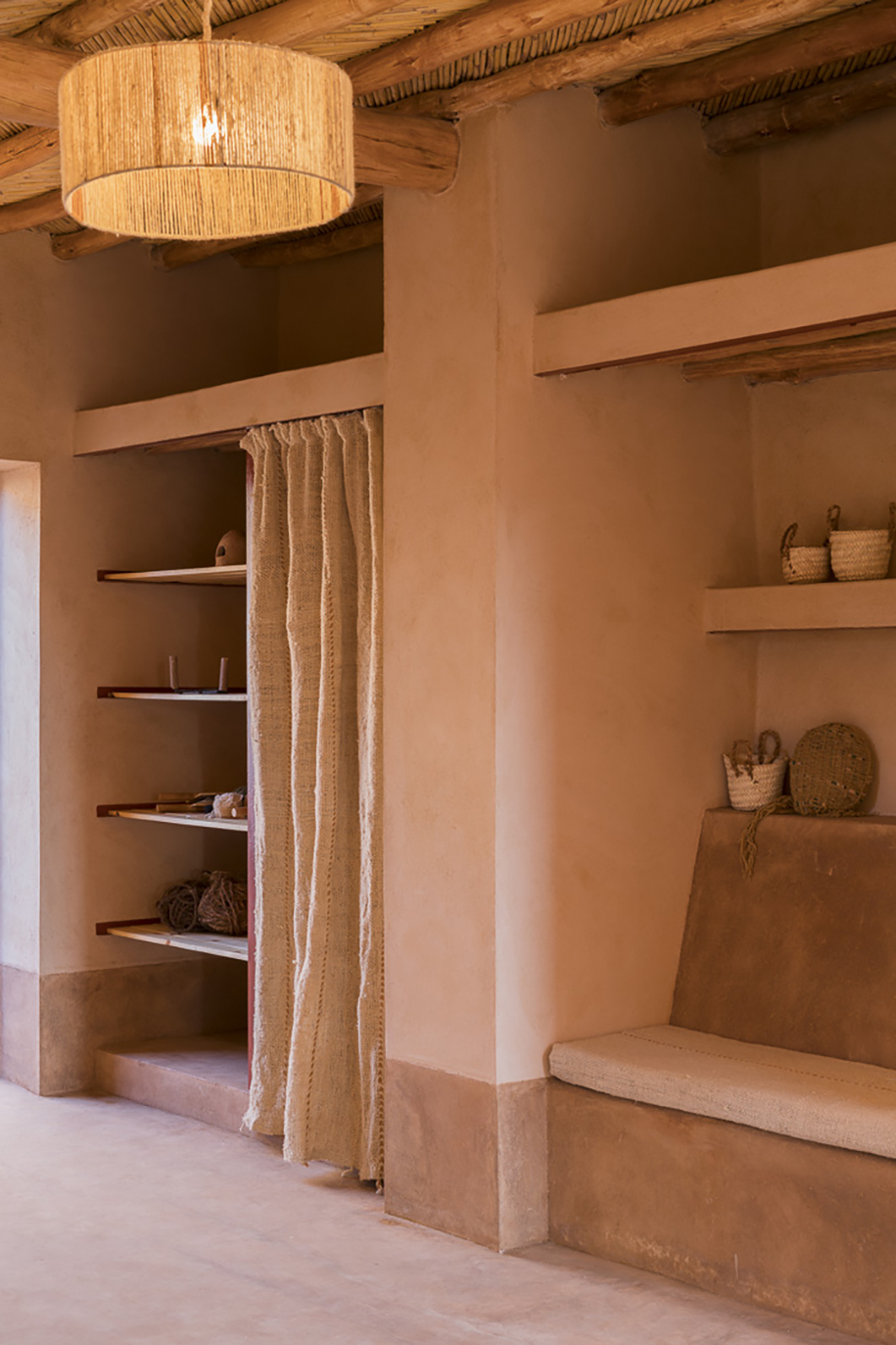
The Preschool of Ouled Merzoug, finished in 2016, was a crystallization of this initiated process, and a festivity was organized to celebrate the building. New friendships were made throughout the building process, and after the opening party, a meeting took place between Aziza Acharit (member of the women’s association), Mohamed Hammi (member of the men’s association), BC and other local stakeholders. The existing lines were set out further into the future focusing on a long-term engagement for the sustainable rural development of Ouled Merzoug. A women’s centre was identified as the next most prominent step towards that goal.
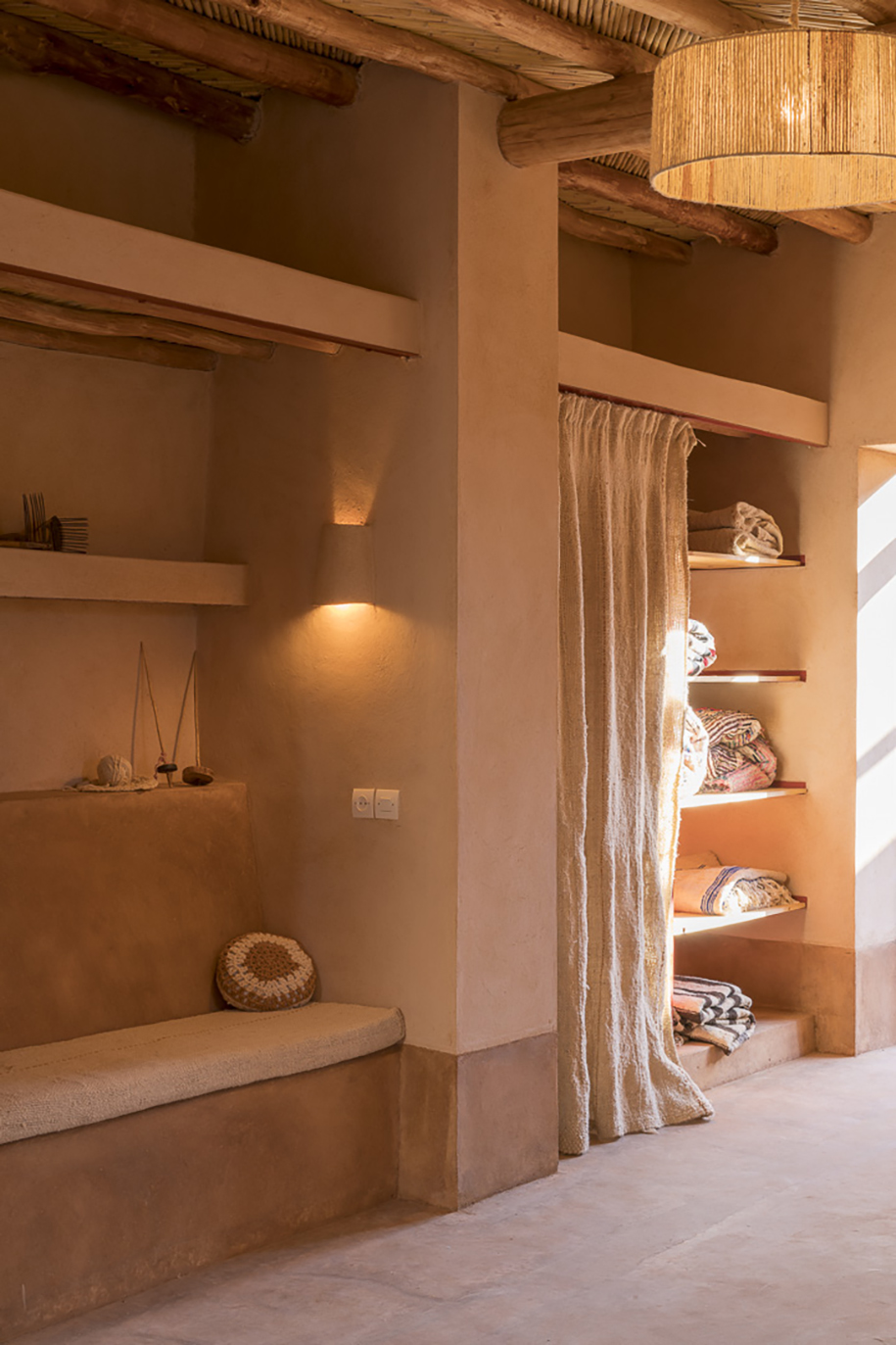
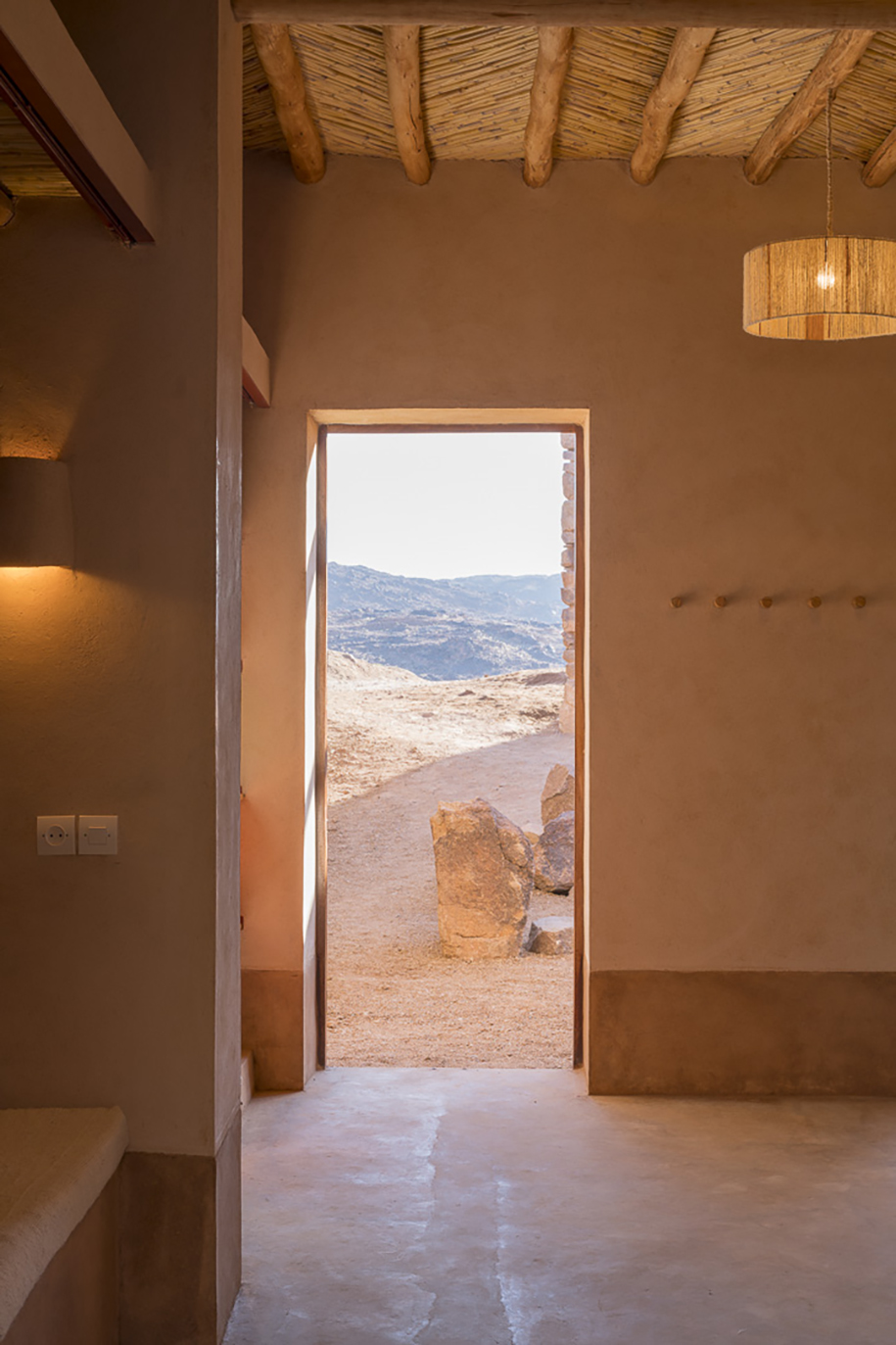
On april 2018, reflecting on the experiences in Ouled Merzoug and other projects, BC published a book called “the act of building”. Architecture is herein presented as a process of taking action with each other and generating stories that affect each other – more so than just buildings and spaces. This act, played by many, was described in the following words:
“The act of building is the complex effort of a given community to erect its infrastructure, encompassing all classes and skill sets, materials and technologies. The act of building contains the power of change through action, story and result.
We believe that, in order to have a positive impact on society through the discipline of architecture, we not only need to focus on the design of its infrastructure, but also on redesigning the process of generating infrastructure. We’ll need to experiment with the role that each member of a community plays in the act of building. For us, a narrow definition of the professional architect no longer suffices; we venture into material production, contracting, storytelling, knowledge transfer, community organization — and all of this influences our design approach”.
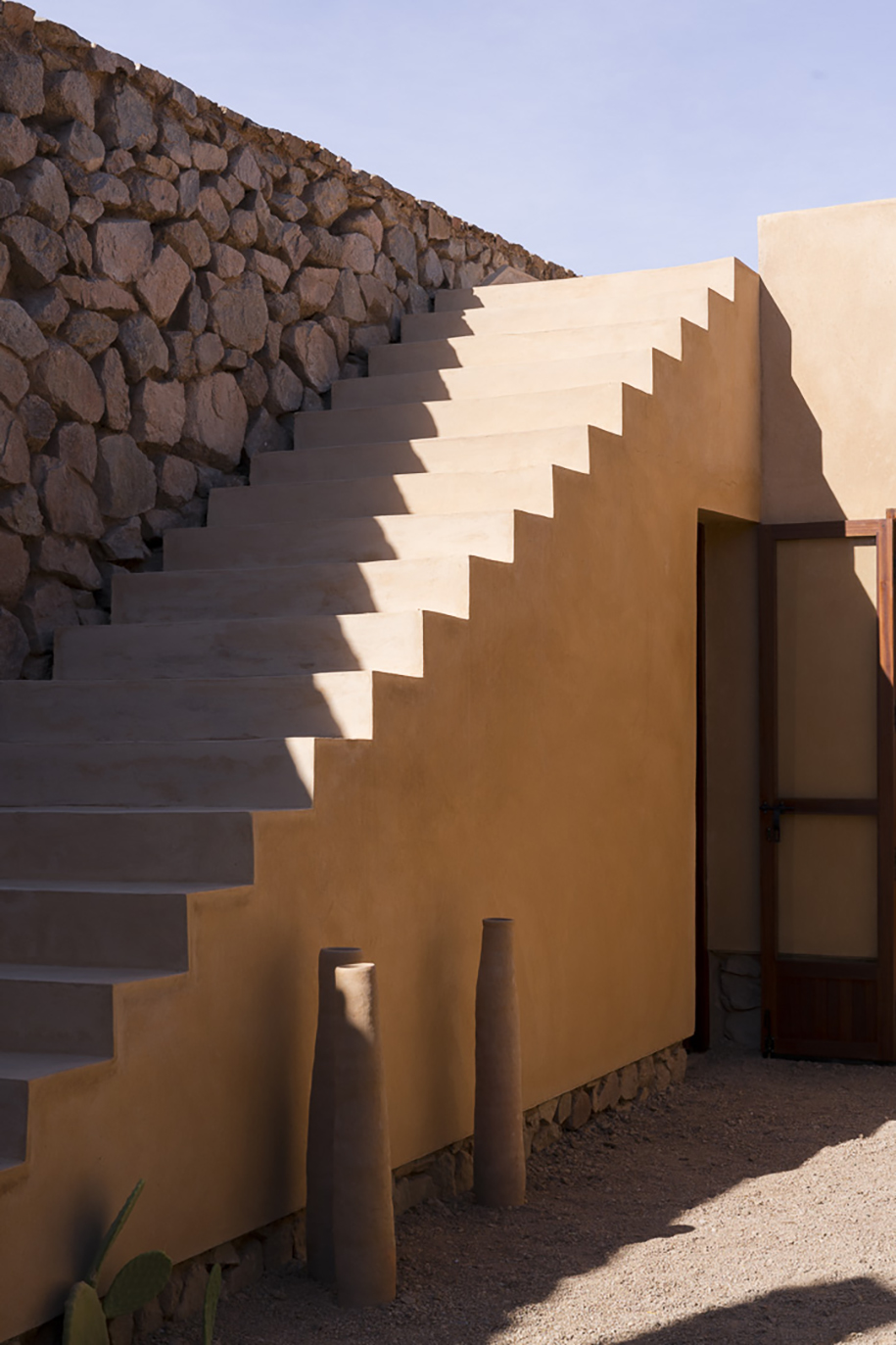
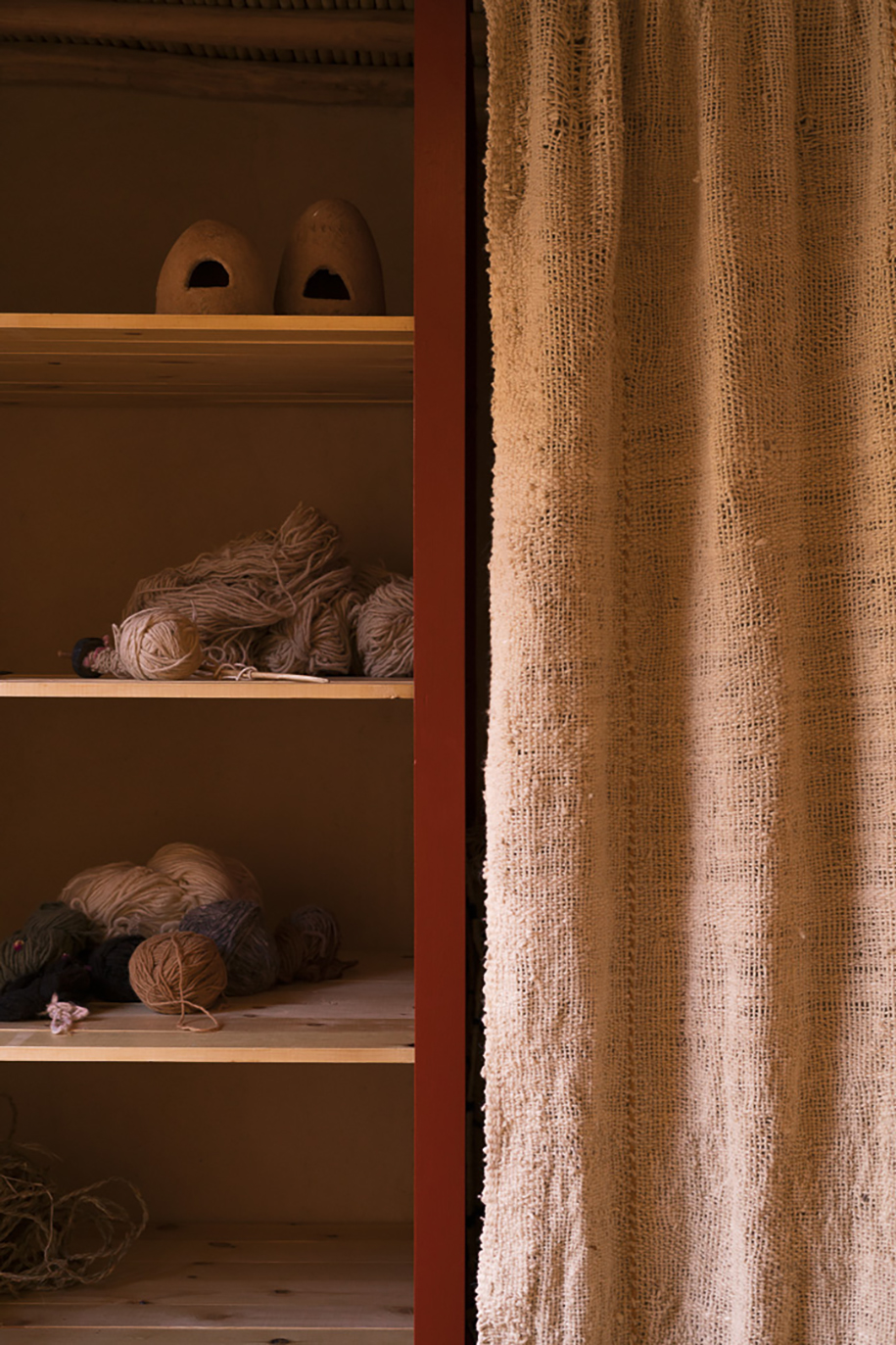
The combination of the continuing engagement in the village of Ouled Merzoug with the development of vision and strategies regarding the act of building, led to a process of educational design. The postgraduate program “Building Beyond Borders” of the UHasselt helped to concretise this vision in architectural education.
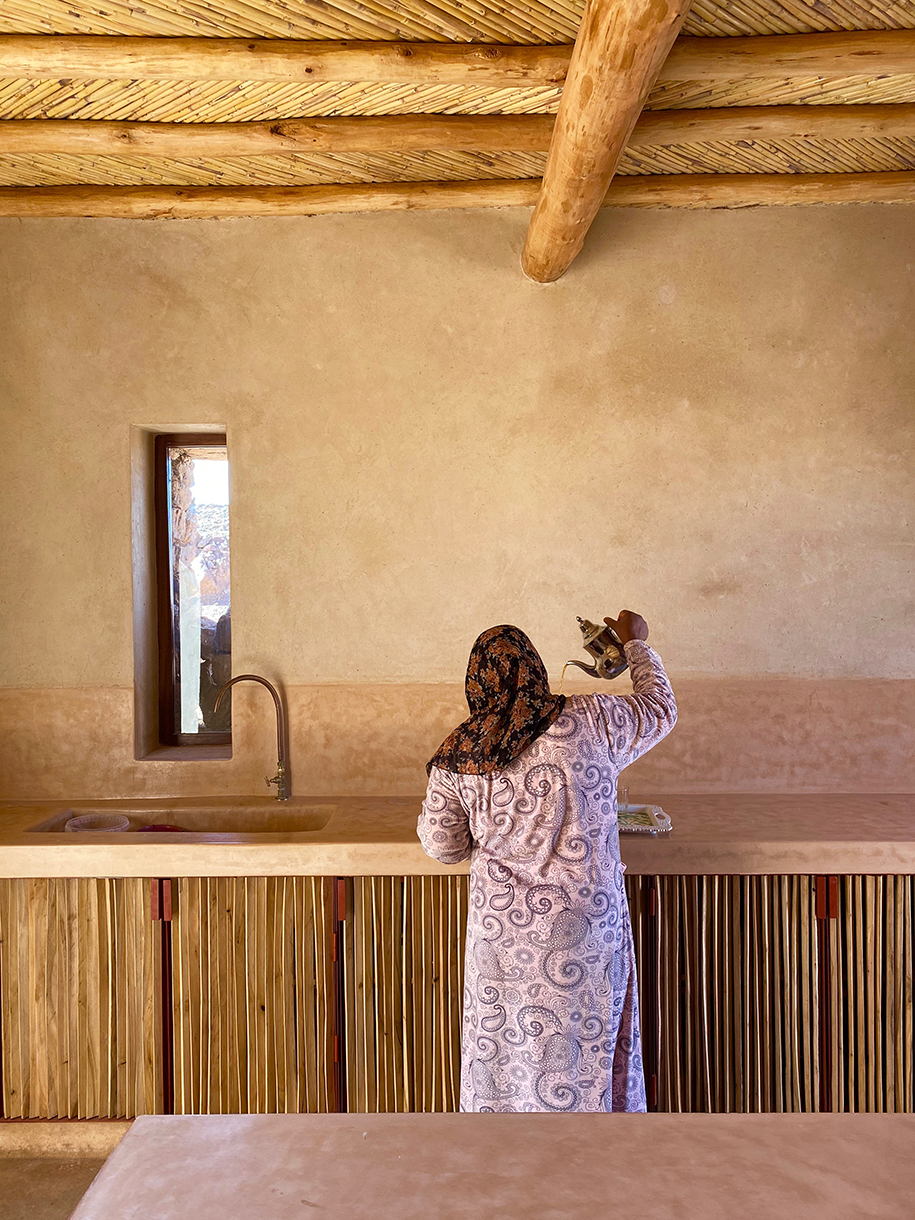
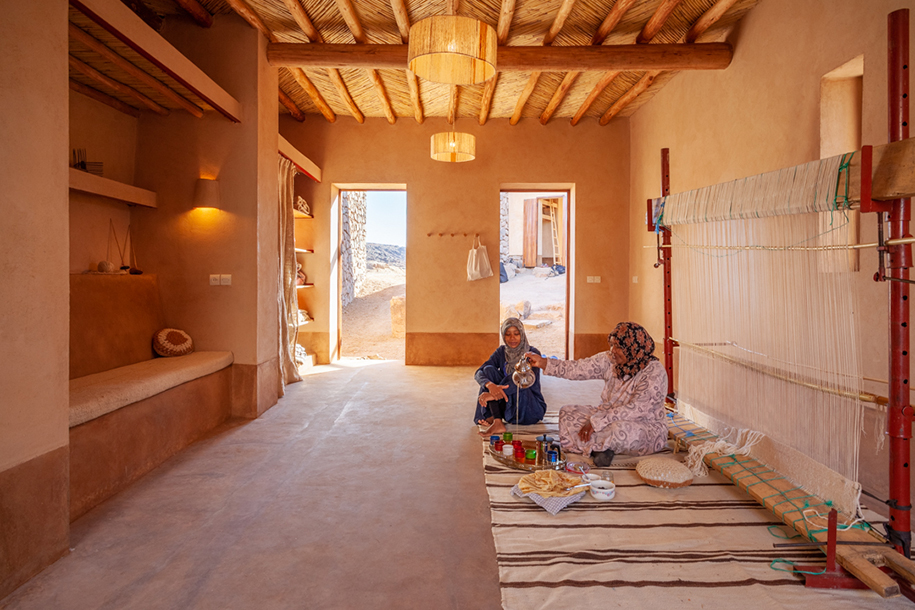
Here, the participants of the postgraduate and many local community members started a new project where they redesigned the process of generating infrastructure, they experimented with the role that each member plays, they ventured into material production, they ventured into contracting, they ventured into storytelling, they ventured into community organization to finally design and build elsewhere a Women’s Centre.
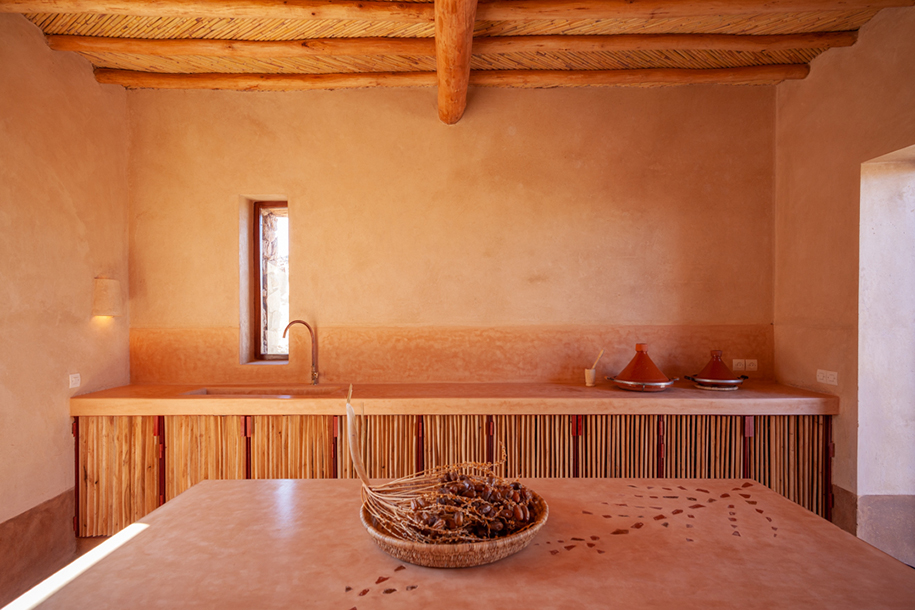
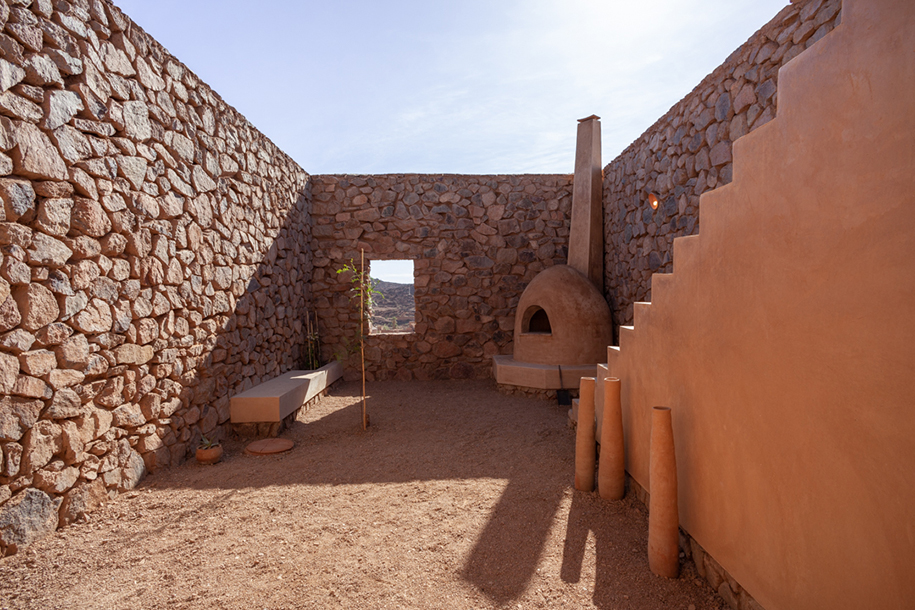
Building Beyond Borders
With its unique pedagogical approach and civic ambition/programme, Hasselt University is the perfect home for Building Beyond Borders. Initiated by the faculty of Architecture and Arts, Building Beyond Borders invites students and professionals to enhance their knowledge of bioclimatic design and empower their skills to build with a low environmental impact. The programme includes a series of workshops, lectures, hands-on experiments and design sessions. Integration of theoretical backgrounds in a self-designed, real-life project, in close collaboration with local craftsmen, stakeholders and universities, makes this experiential programme unique.
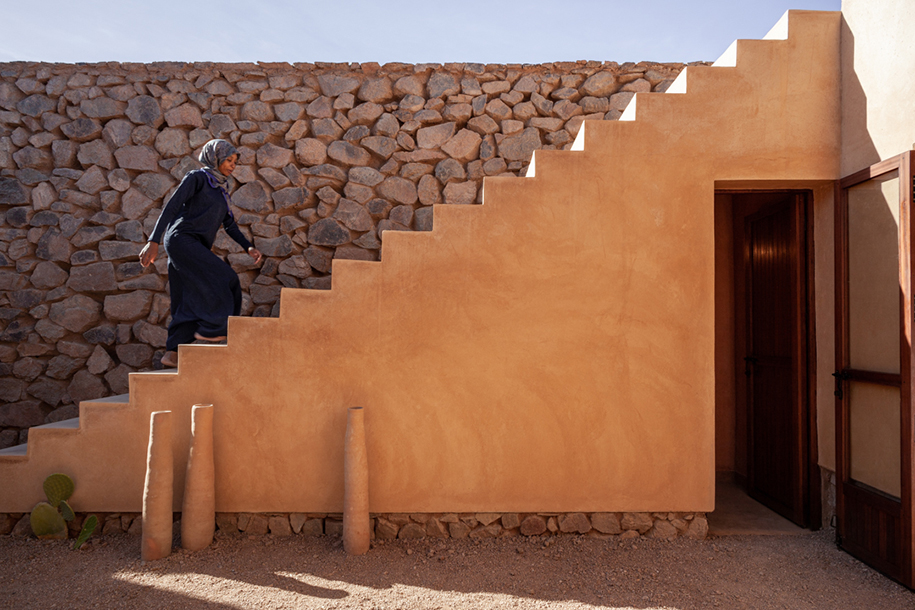
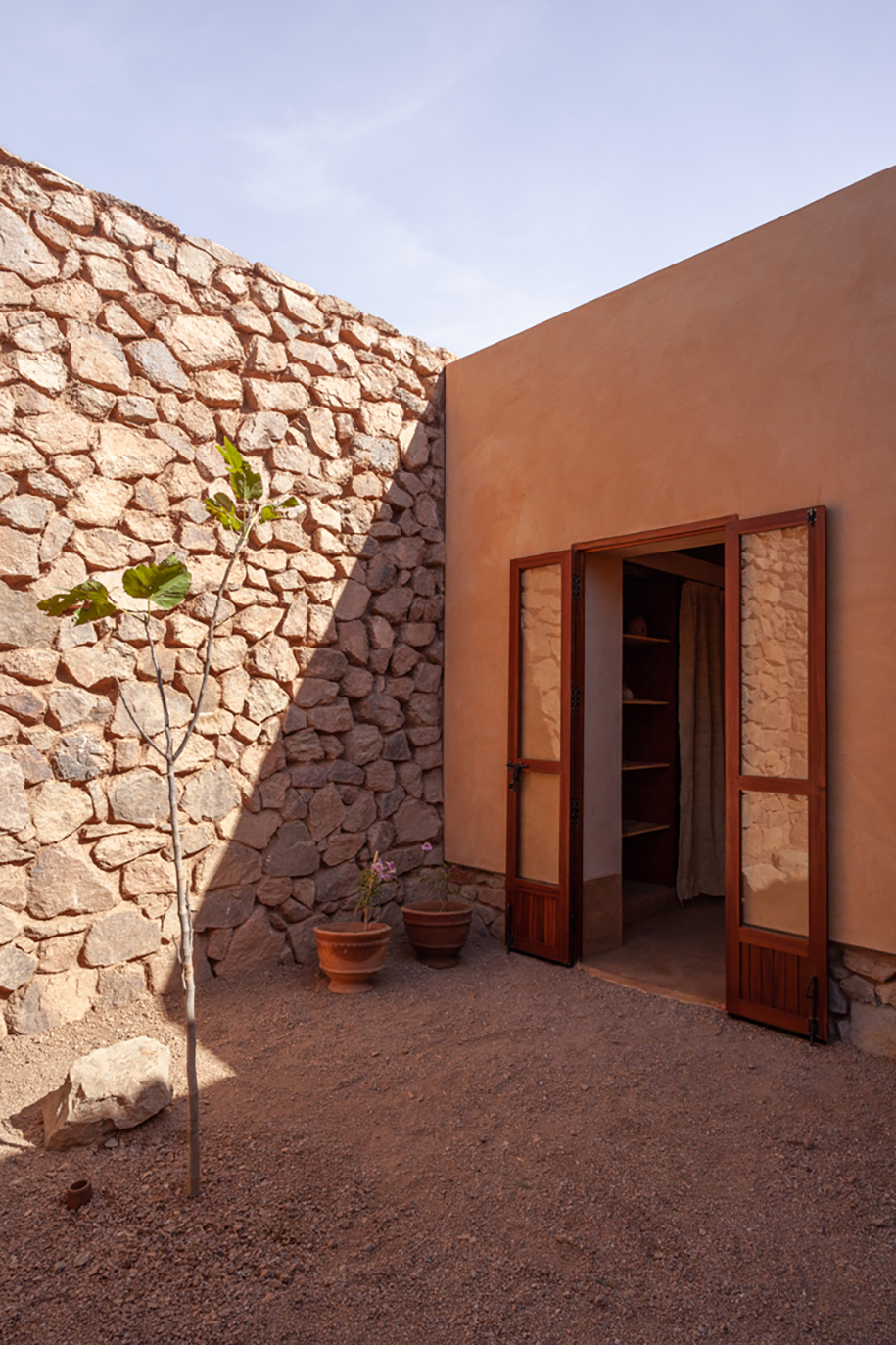
Every built project will be long-term monitored by the Building Beyond Borders research team, to improve the bioclimatic qualities of upcoming projects and to share the knowledge with whomever wants to become a changemaker. The Women’s House in Ouled Merzoug is Building Beyond Borders’ first “real-life” project and the whole process exceeds its academic expectations by far thanks to the unconditional commitment of all participants and the local community.
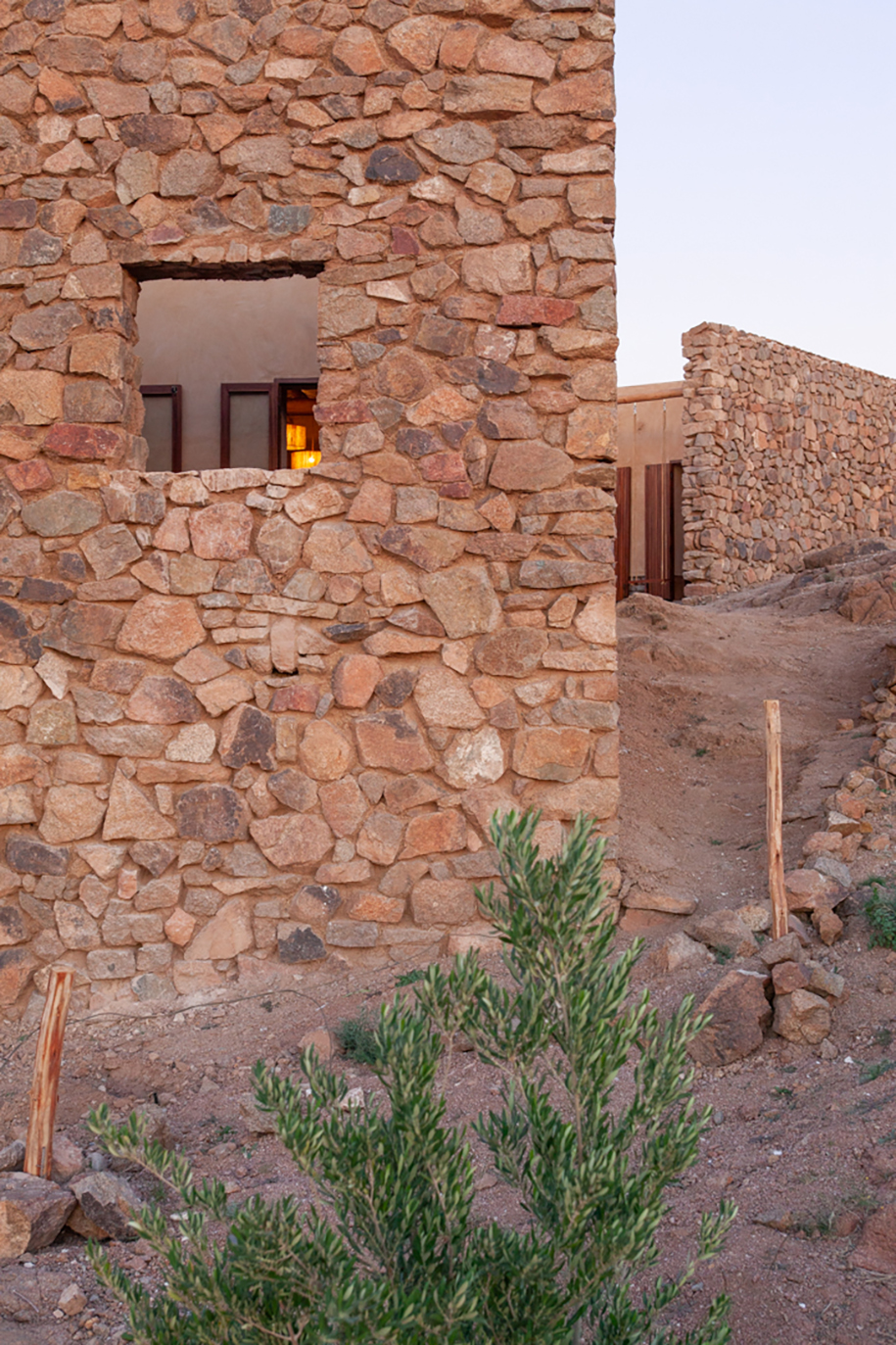
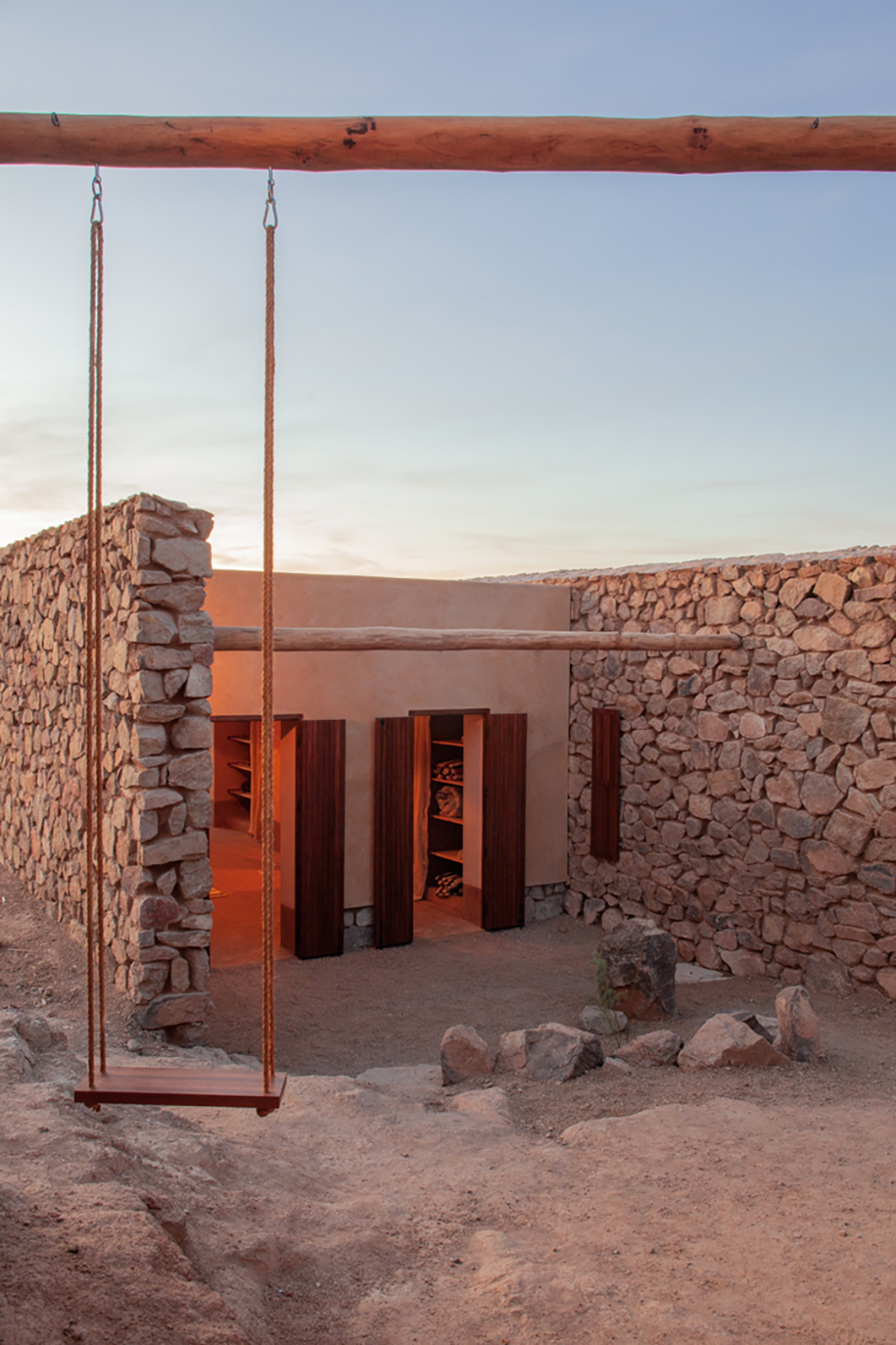
The project is designed and built with the utmost dedication to the focus of the course, using local and vernacular materials and techniques and striving for a comfortable indoor climate and a smooth blending in its surroundings. It makes the Women’s House a welcoming “home” for the women of Ouled Merzoug.
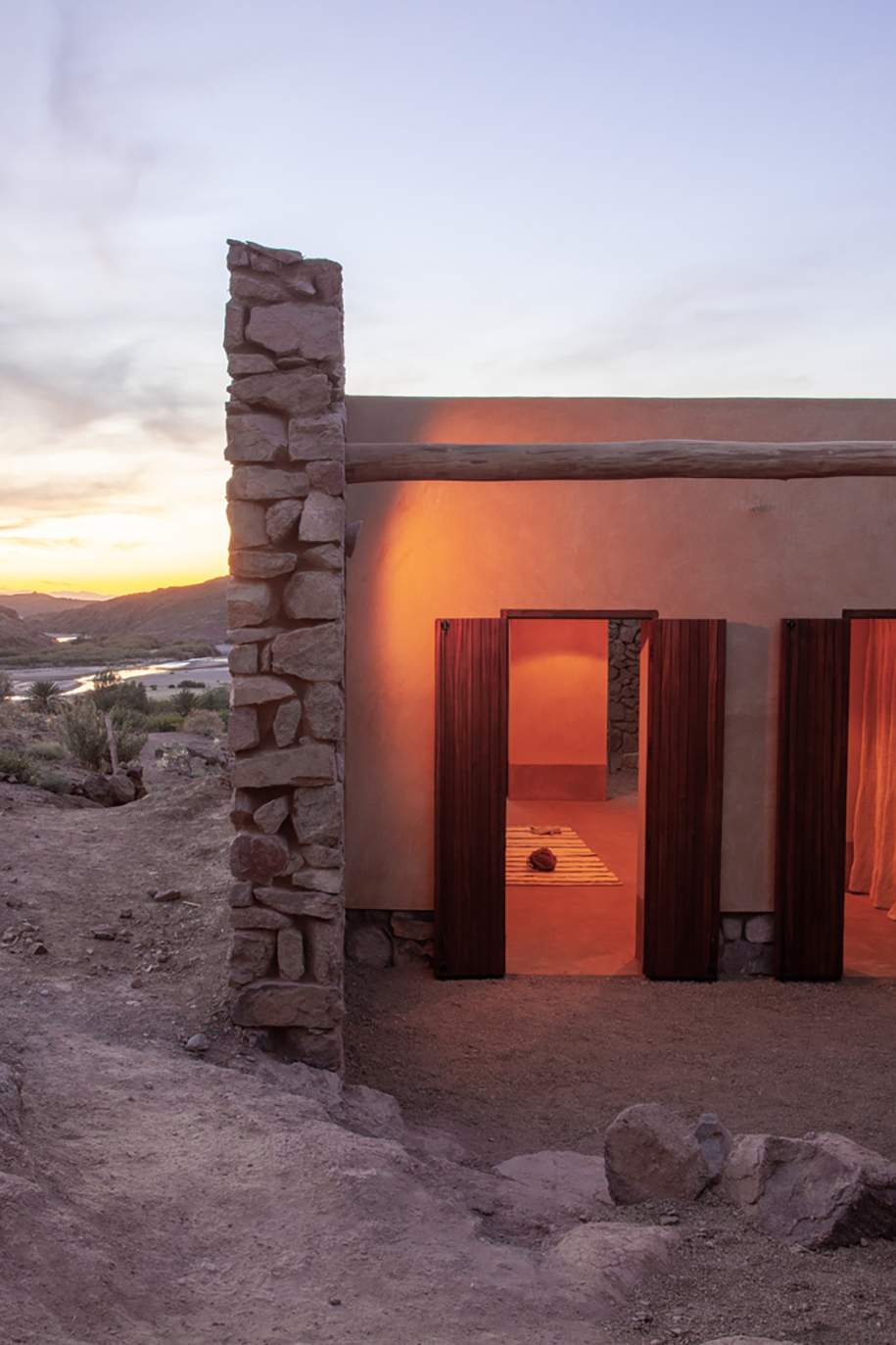
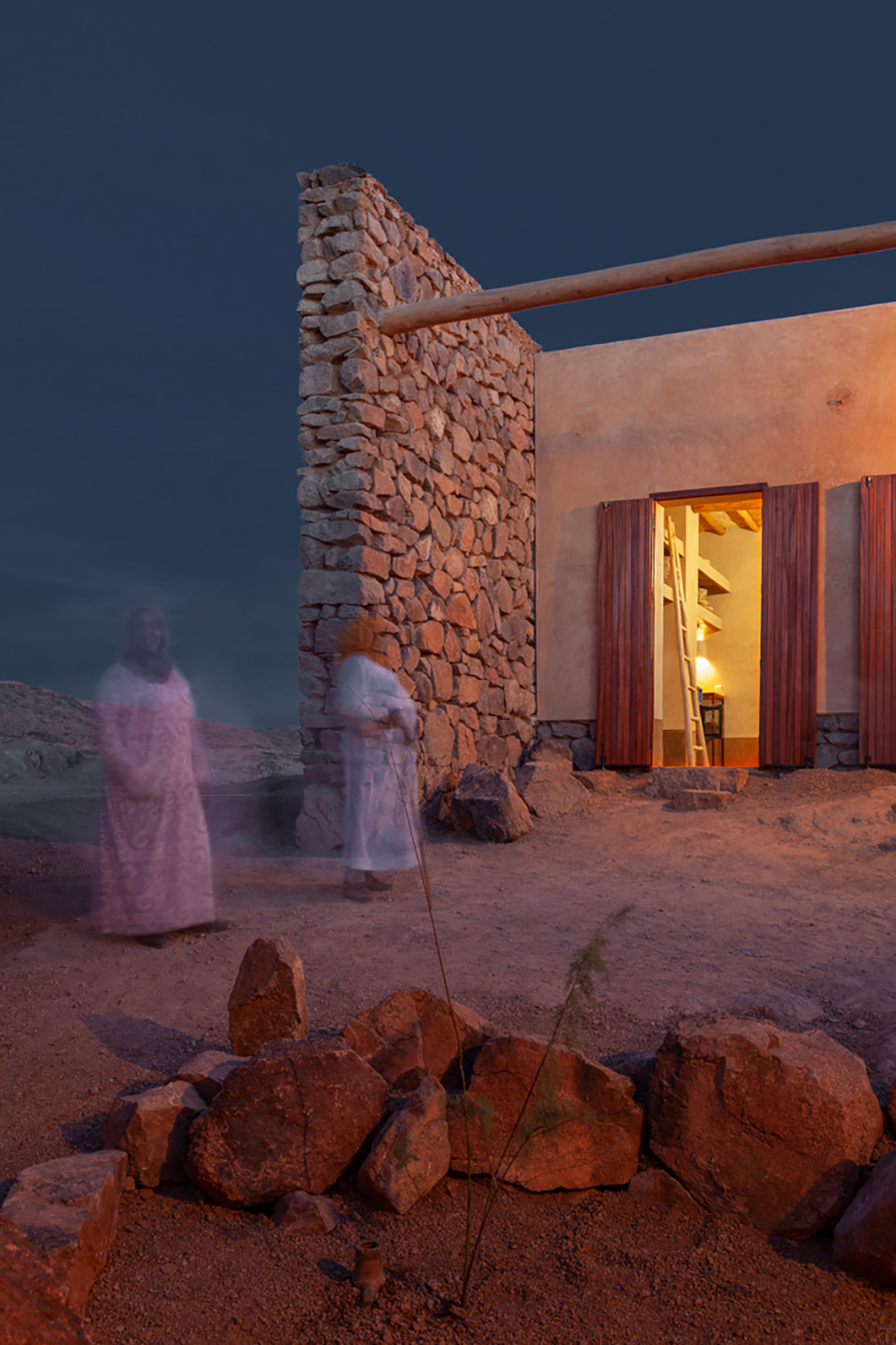
The Women’s House of Ouled Merzoug
-text by Hannah Van Breen (participant of the BBB postgraduate)
In Ouled Merzoug, a small earthen village near the Atlas Mountains of Morocco, a piece of land was offered by the community to the recently founded women’s association AFOM (Association des Femmes d’Ouled Merzoug). Within the postgraduate certificate Building Beyond Borders, organized by UHasselt SEE, the participants designed and built in close collaboration with local women and workers. The end result of this participatory process is a Women’s House: a meeting, working and learning place in the centre of the village. A place where women can share their crafts with the community and visitors.
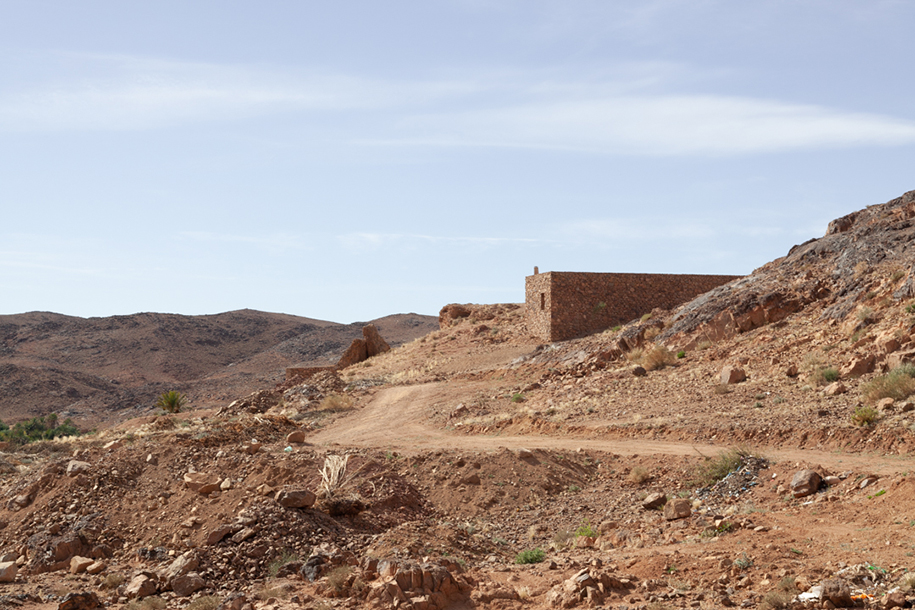
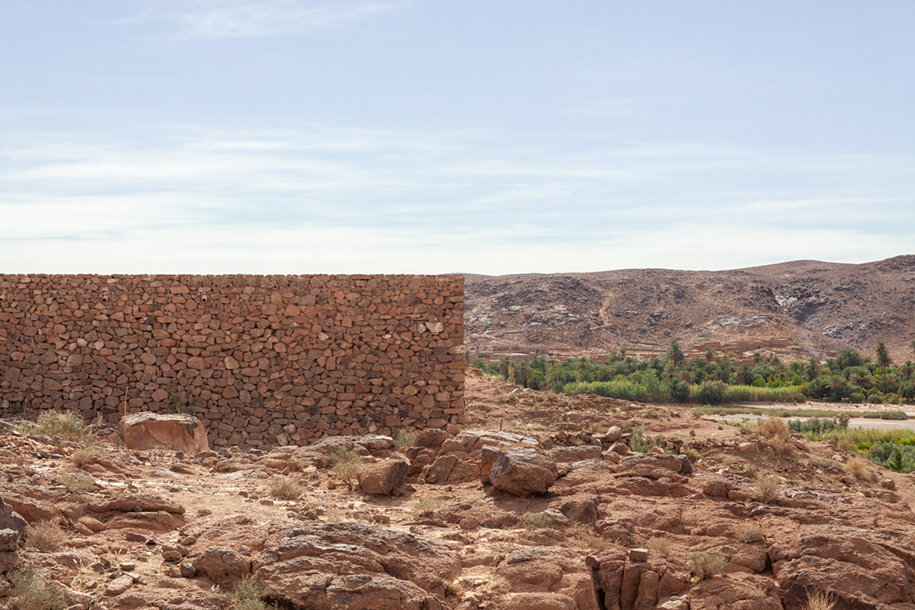
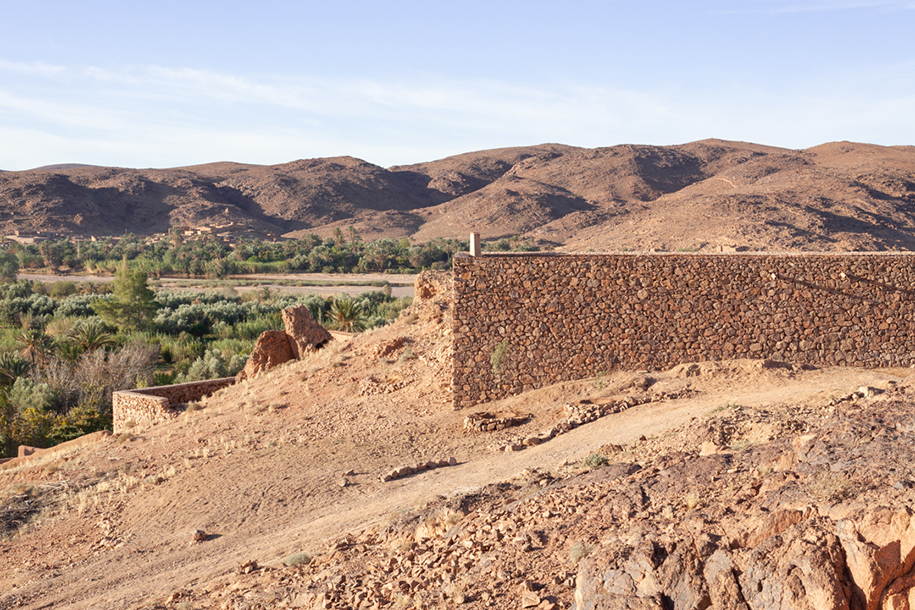
In this project, the limits of sustainable building were challenged by maximizing the use of local and regenerative materials and the confrontation between traditional and contemporary building techniques.
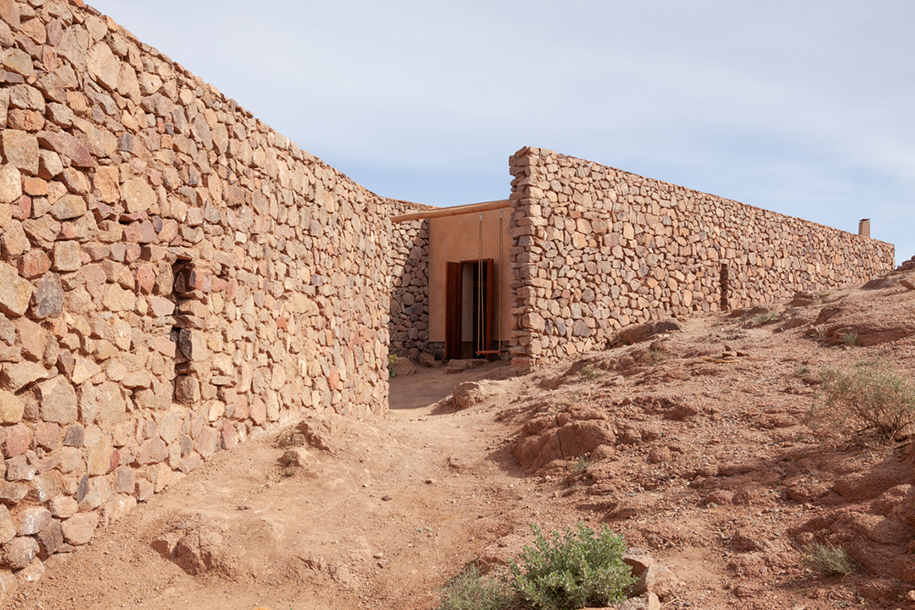
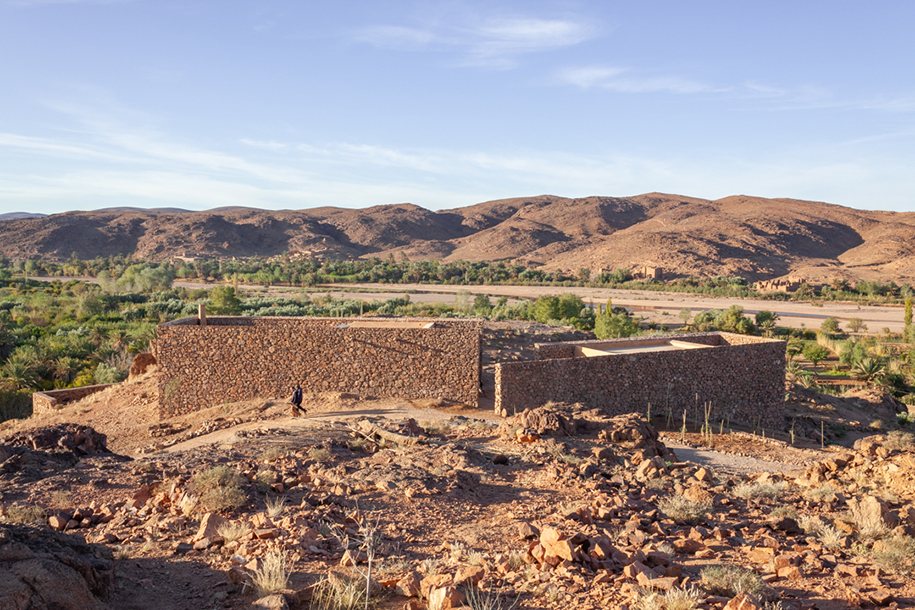
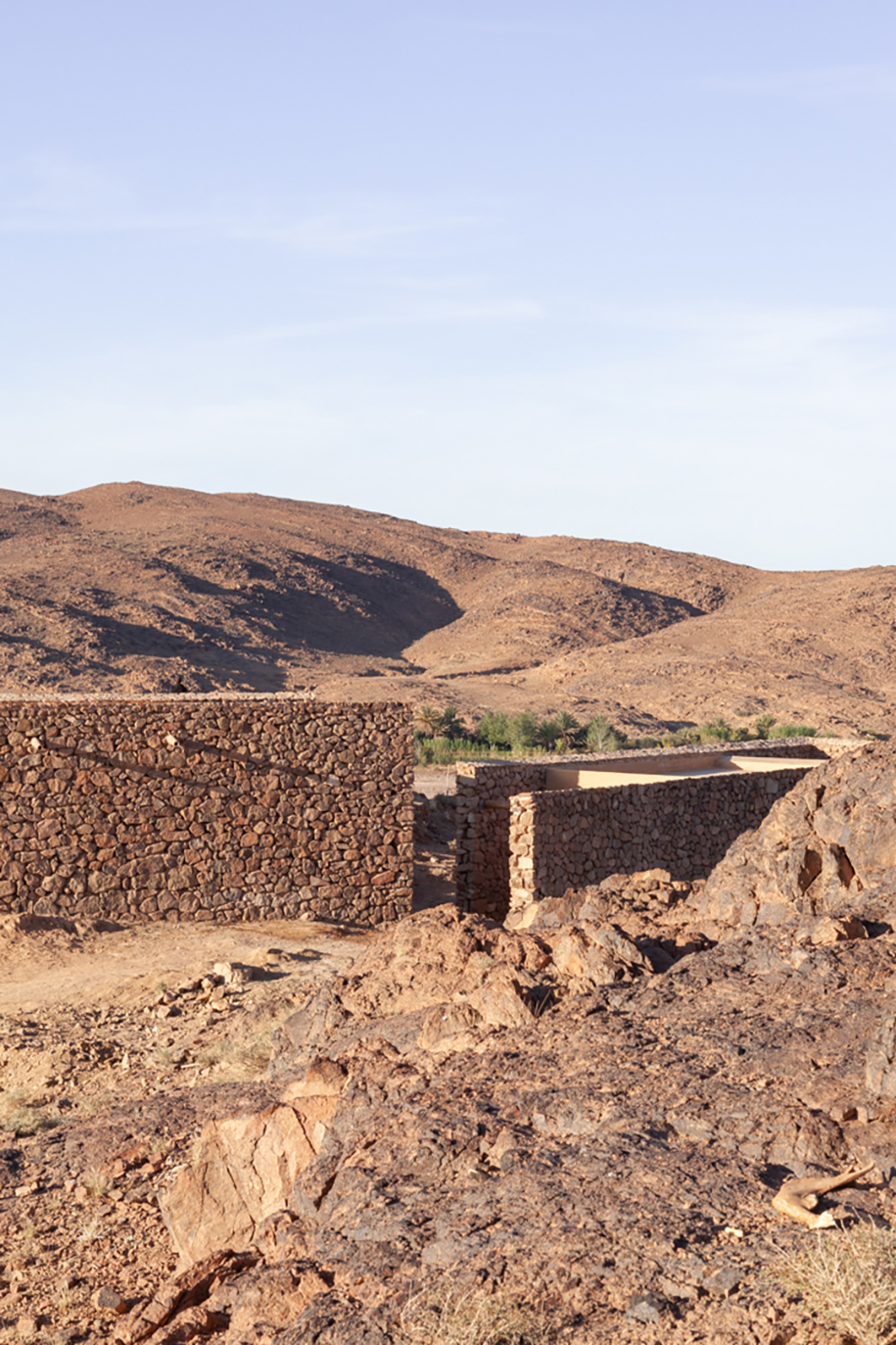
Framework
In September 2018, a team of architects, urban planners, interior architects and artists were brought together for the first edition of the postgraduate certificate Building Beyond Borders of Hasselt University. With a focus on bioclimatic design and responsible material use, the postgraduate consists of tutoring theoretical background and research, project-based learning, hands-on experiments and a real-life Design camp; Build project abroad.
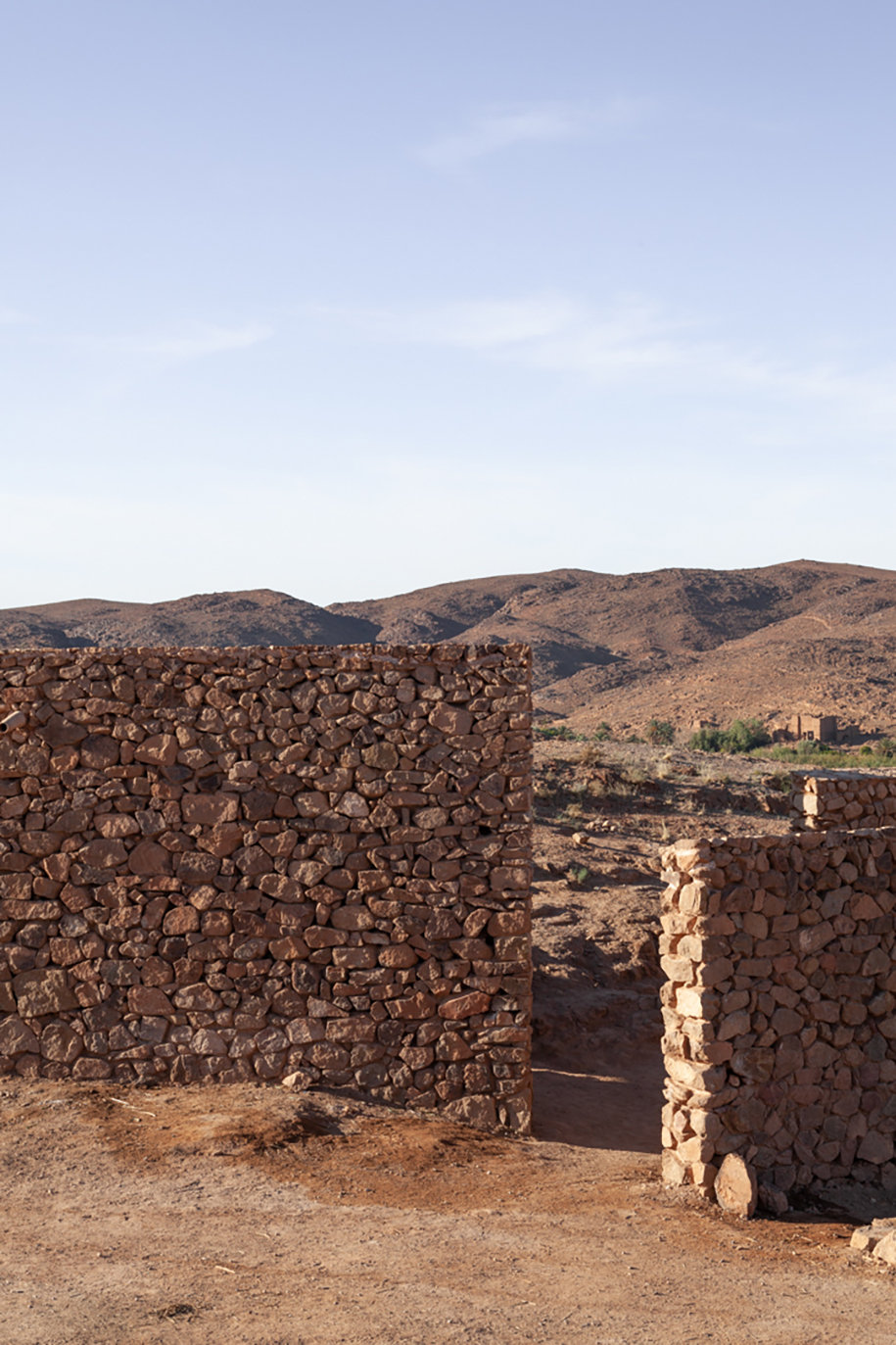
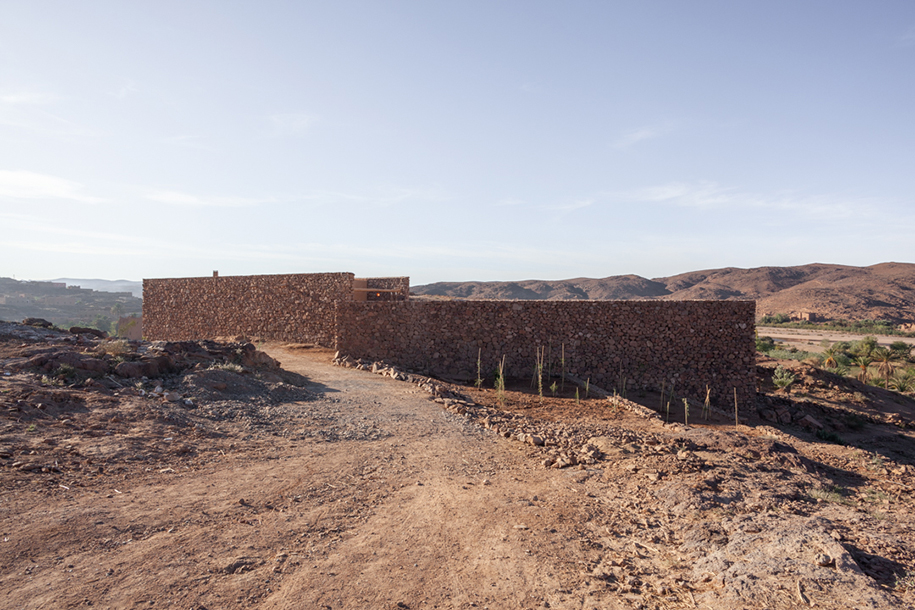
For this edition, the question was raised to build a Women’s House in Ouled Merzoug, building further on the already existing relationship between BC architects & studies and the local community. In November 2018, the participants went to Ouled Merzoug for the first time to get to know the village and its inhabitants, measure the site and organize workshops with the women to define the programme in collaboration with Harmonie Begon. After an intense design period in Hasselt, the foundation works started in April 2019. In December 2019 the keys were handed over to the Women’s Association.
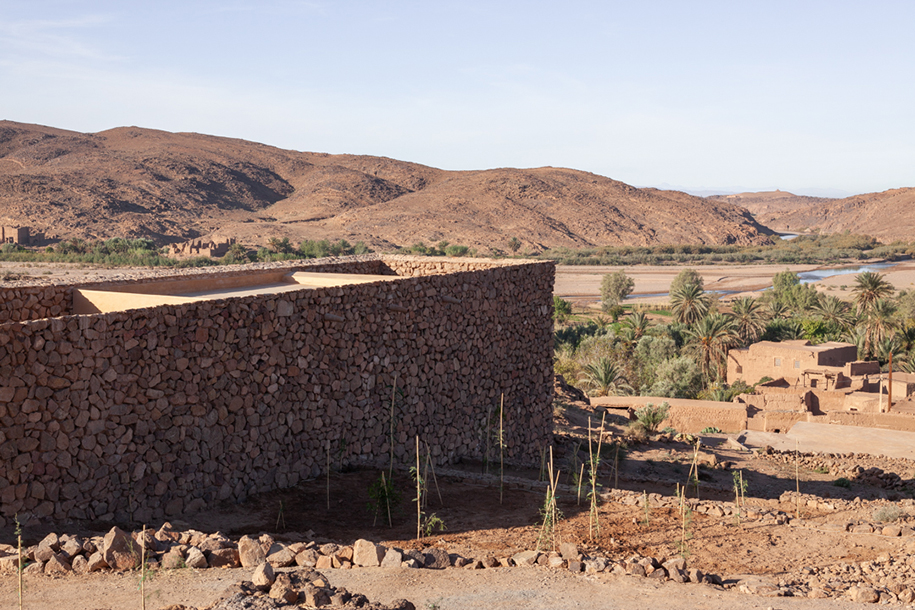
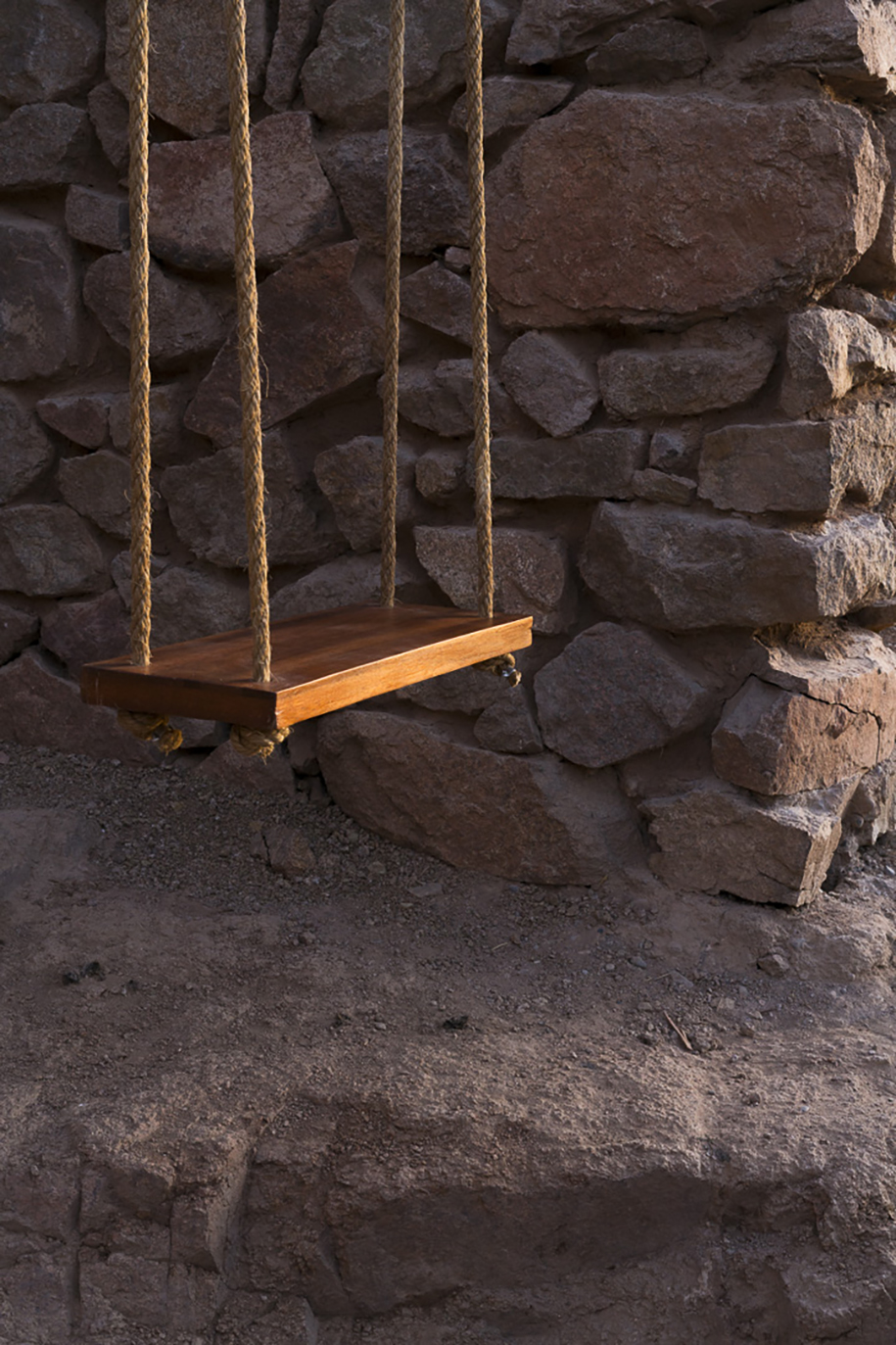
On the hill, on the crossing of informal paths
The building plot has some particular characteristics. It is located on a slope, in a gully leading the water from the mountains to the agricultural fields of the “Palmeraie” and the river during periods of heavy rain. Locals walk by regularly, as two main shortcuts run over the site. One path connects the main road and centre of the village with a square for religious festivities and the graveyard, the other one passes by a sequence of important public spaces such as the soccer field, the preschool and the primary school.
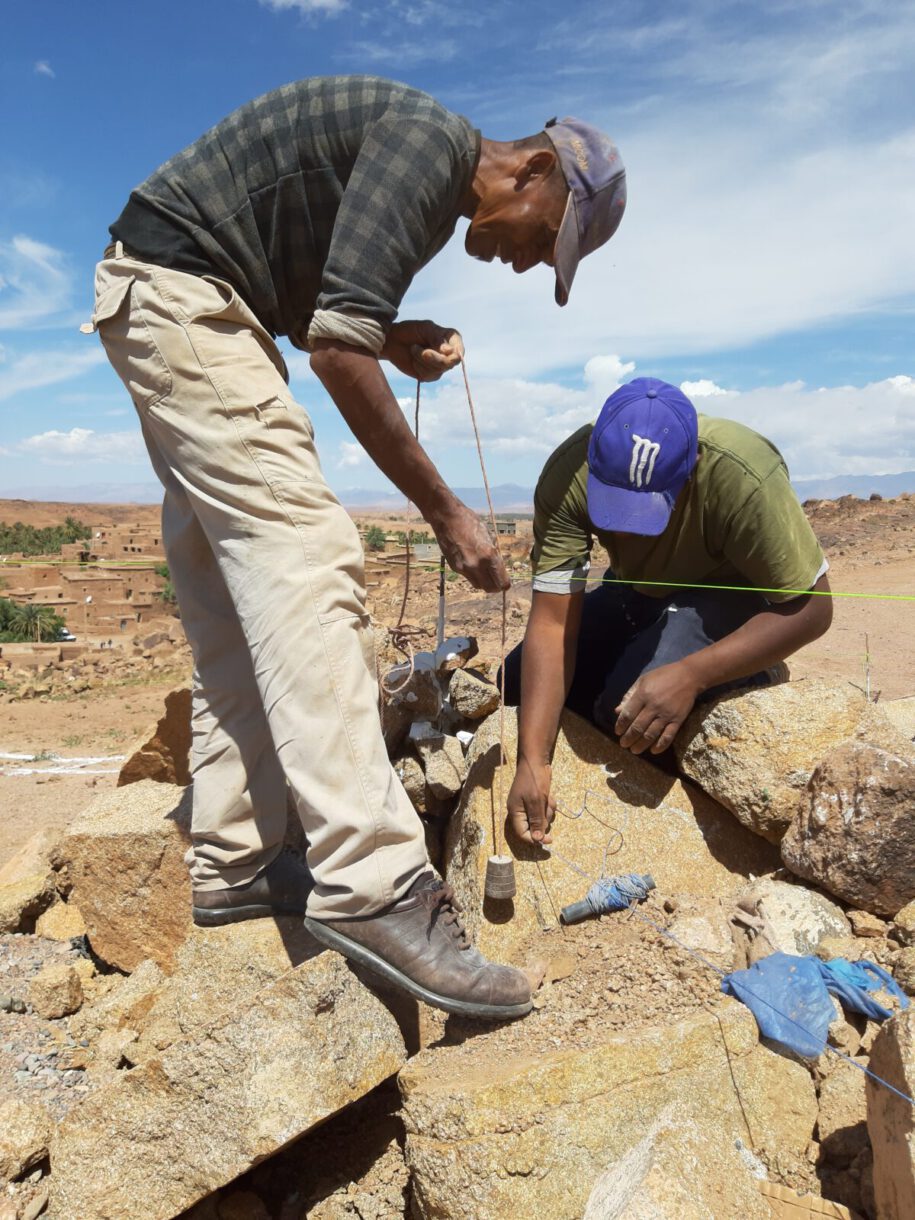
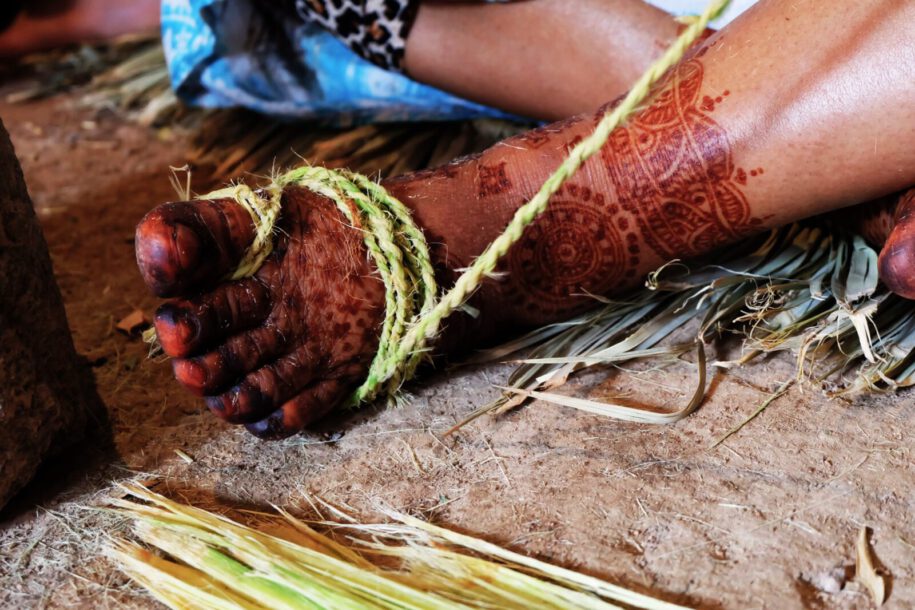
A house with two façades
The features of the site were taken as starting points for the implementation and design of the Women’s House. The house is not built in the center of the gully, but along the ridge of the hill. Following the natural topography of the site, the Women’s House consists of two volumes, each positioned in a slightly different direction. In its specific positioning the House seeks connection with both sides of the village. The main façades at the ends of the building capture two beautiful panoramic views: sunrise over the mountains and sunset over the river. The public character of the Women’s House is emphasized by placing the building on the crossing of the two informal paths. The main path leads the villagers directly to the heart of the building.
From center to end, from public to private
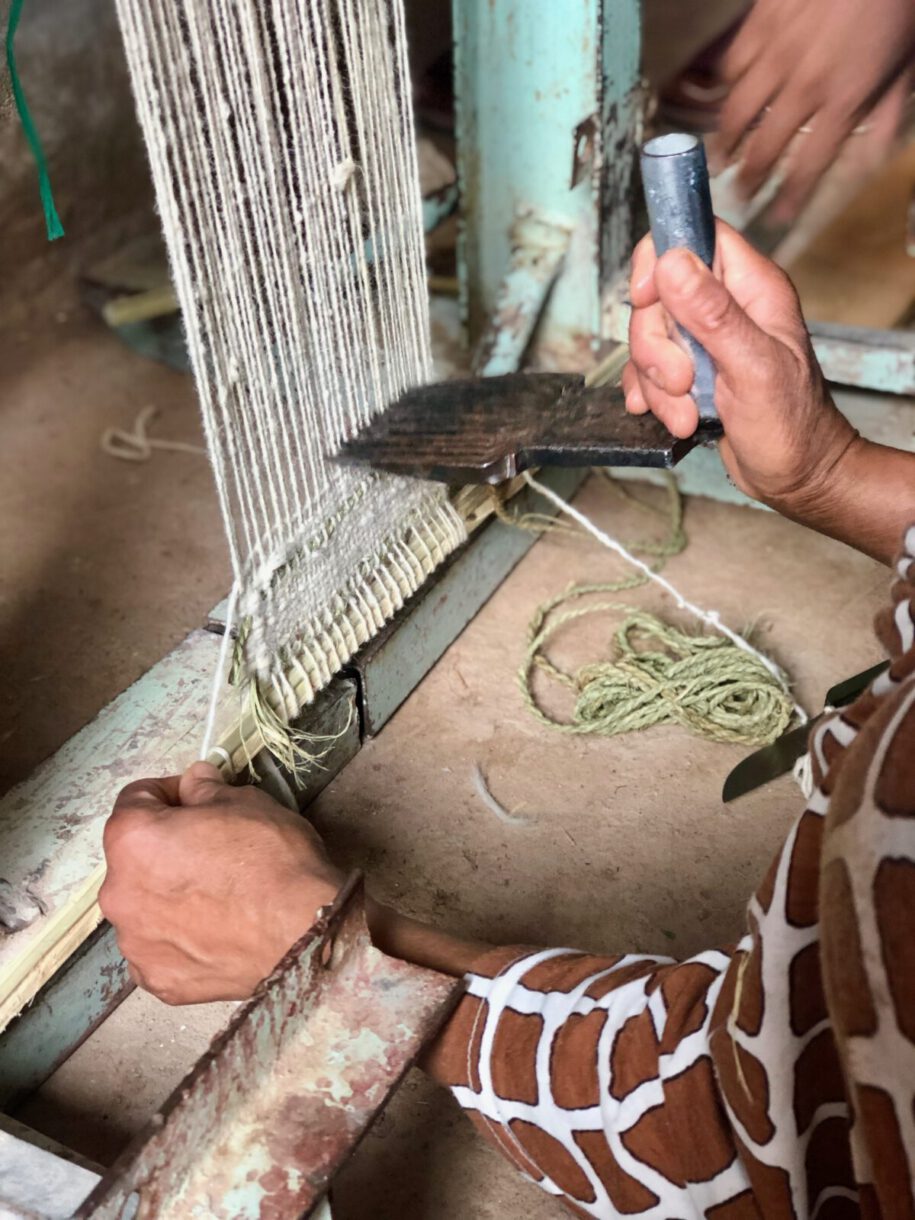
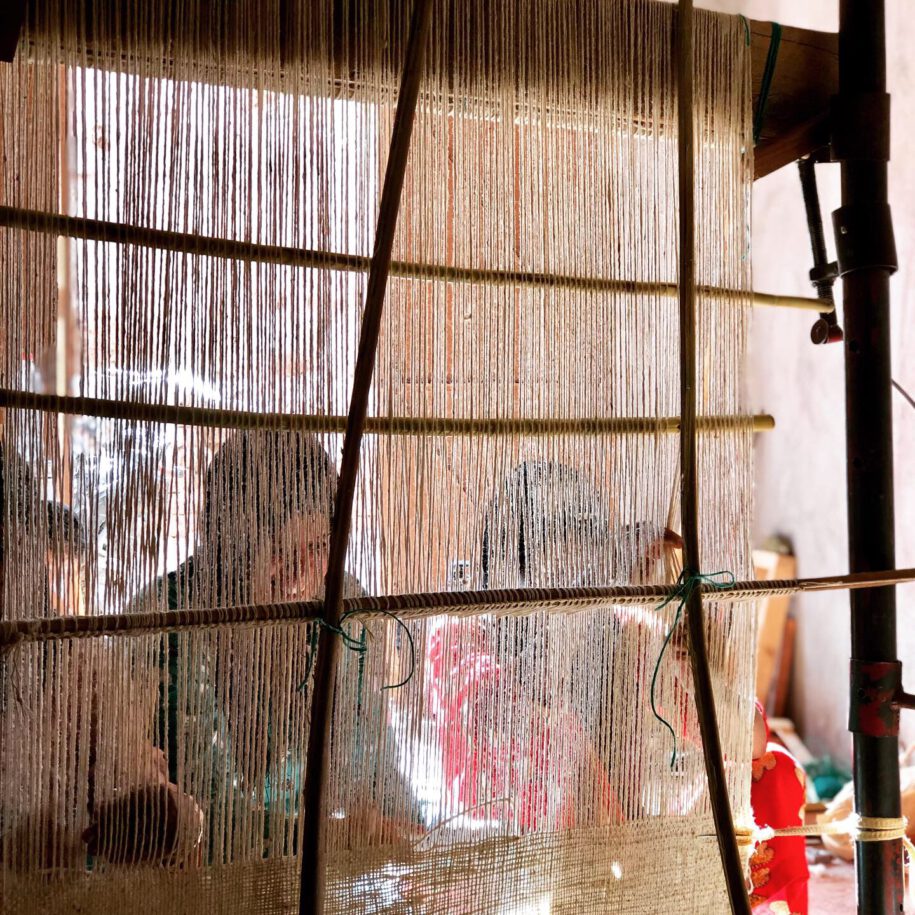
The Women’s House is entered through a central meeting place, a public heart, the “cour”. The “cour” connects the two volumes of the house: a workshop space, the “atelier des femmes” and a communal baking house, the “boulangerie commune”.
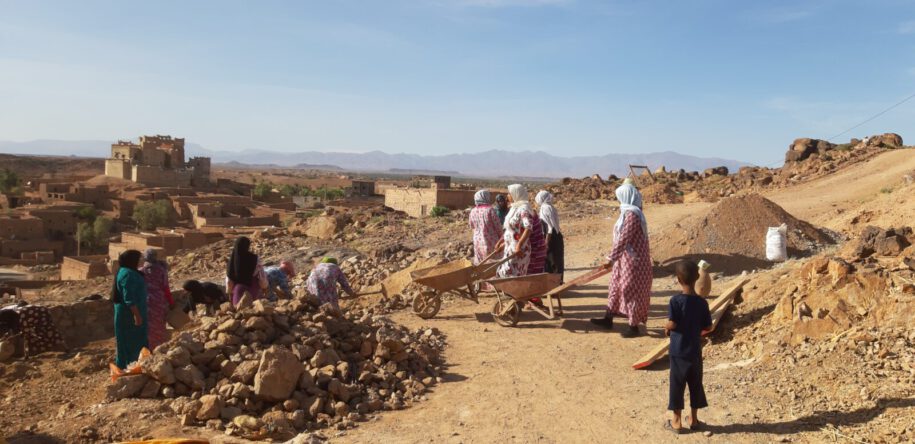
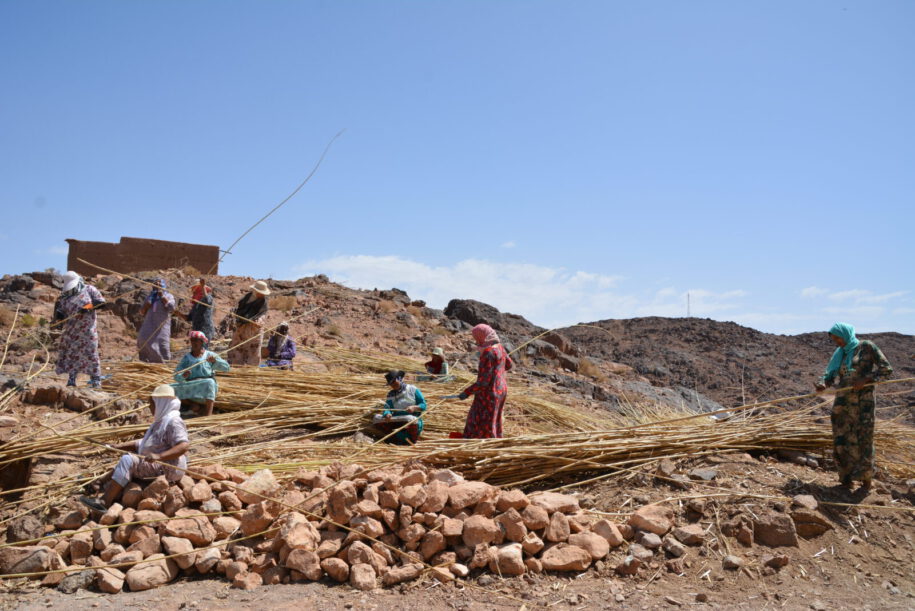
The “atelier” is a place for meeting, teaching and learning, spinning and weaving. In the “boulangerie” the women can enjoy sharing meals together, bake and sell homemade breads and pastries. Whereas the center of the building is the most public, the ends are the most private. Each volume gives access to an intimate garden. Apart from being areas for leisure and resting, the gardens are designed and furnished to enhance the program of the adjacent spaces. The large sink in the bench of the “atelier” garden makes it possible for the women to wash and color wool. In the cob oven in the “boulangerie” garden, women can experiment with new recipes.
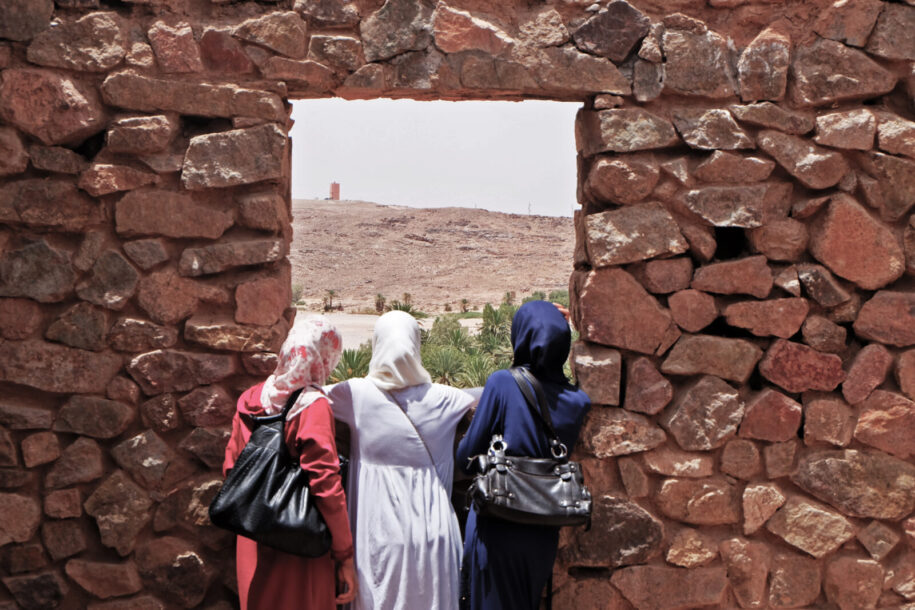
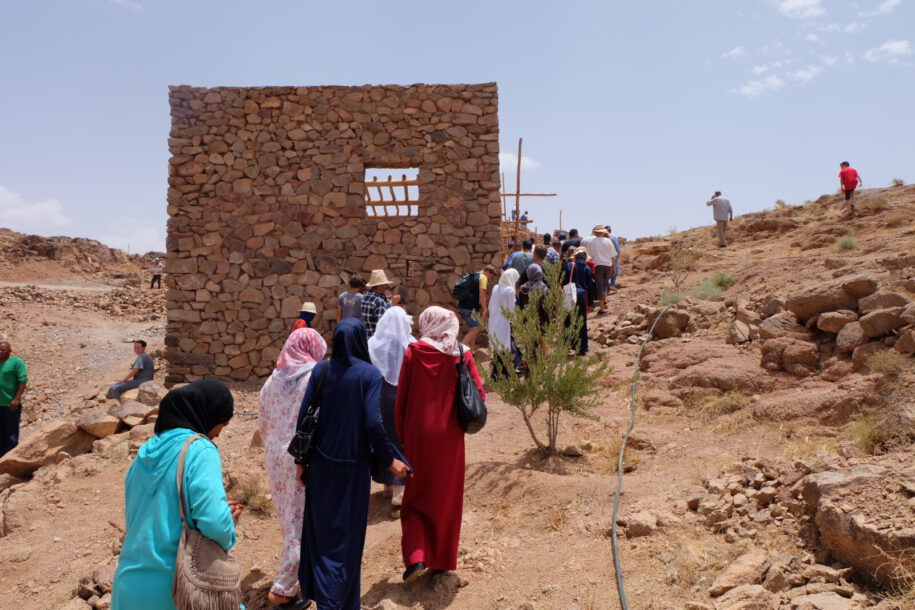
Building with natural materials – pushing the limits
Maximizing the use of local and natural materials and minimizing the amount of construction waste, were taken as base principles in this project. For the envelope of the building, pieces of granite rock were dug out from the surrounding hills. The inner walls are made out of adobe bricks. While the roof span of the building is based upon the maximum length of the eucalyptus beams that can be found on the local market, the ceiling is made out of reed that grows in the “Palmeraie”. As for the finishing of the walls and floors, different mixes of local earth, river sand, lime and straw are used. By the virtue of the close collaboration between skilled local workers and foreign architects, and thereby the confrontation of traditional and new building techniques, it was possible to reinvent and explore new construction details during the building process.
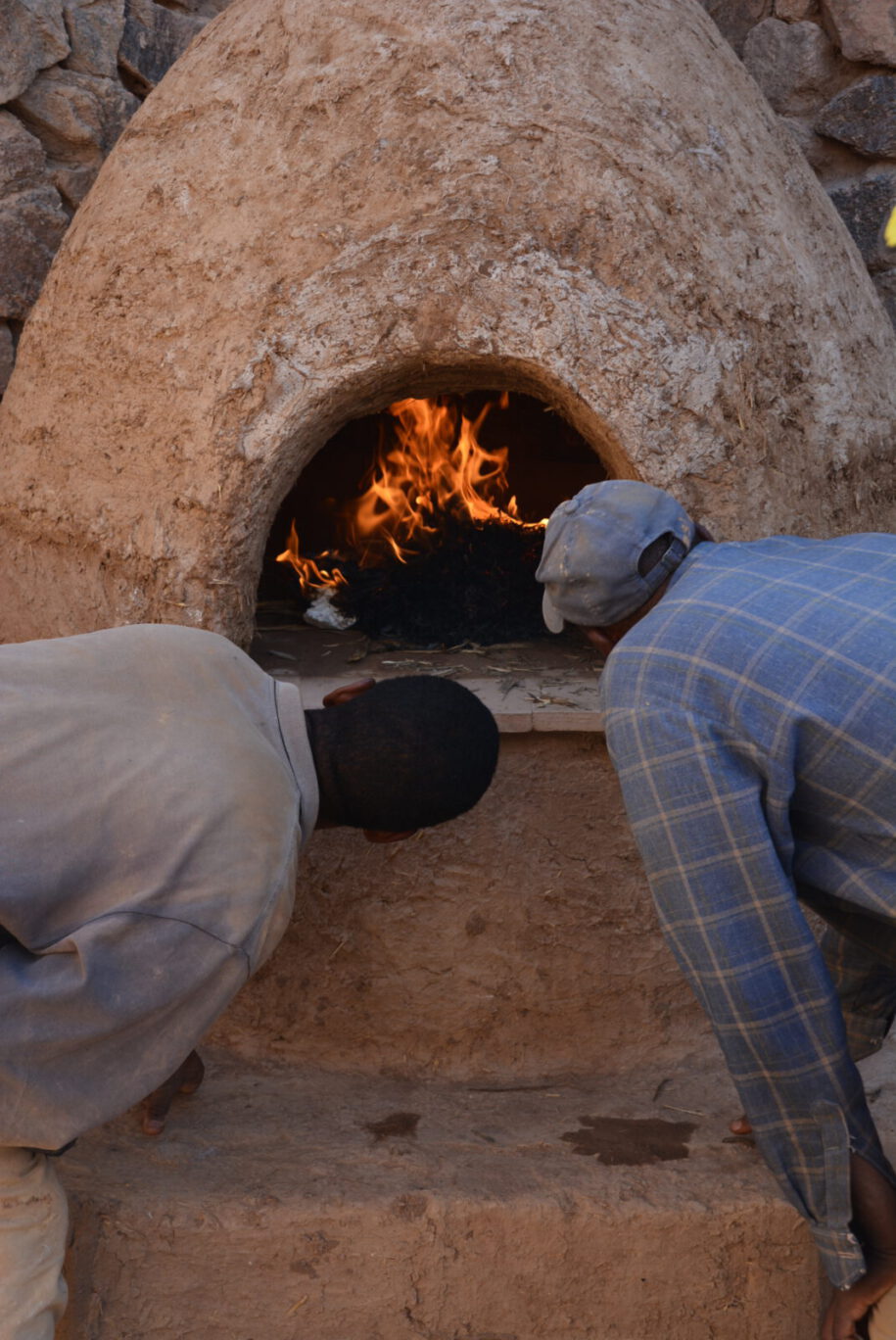
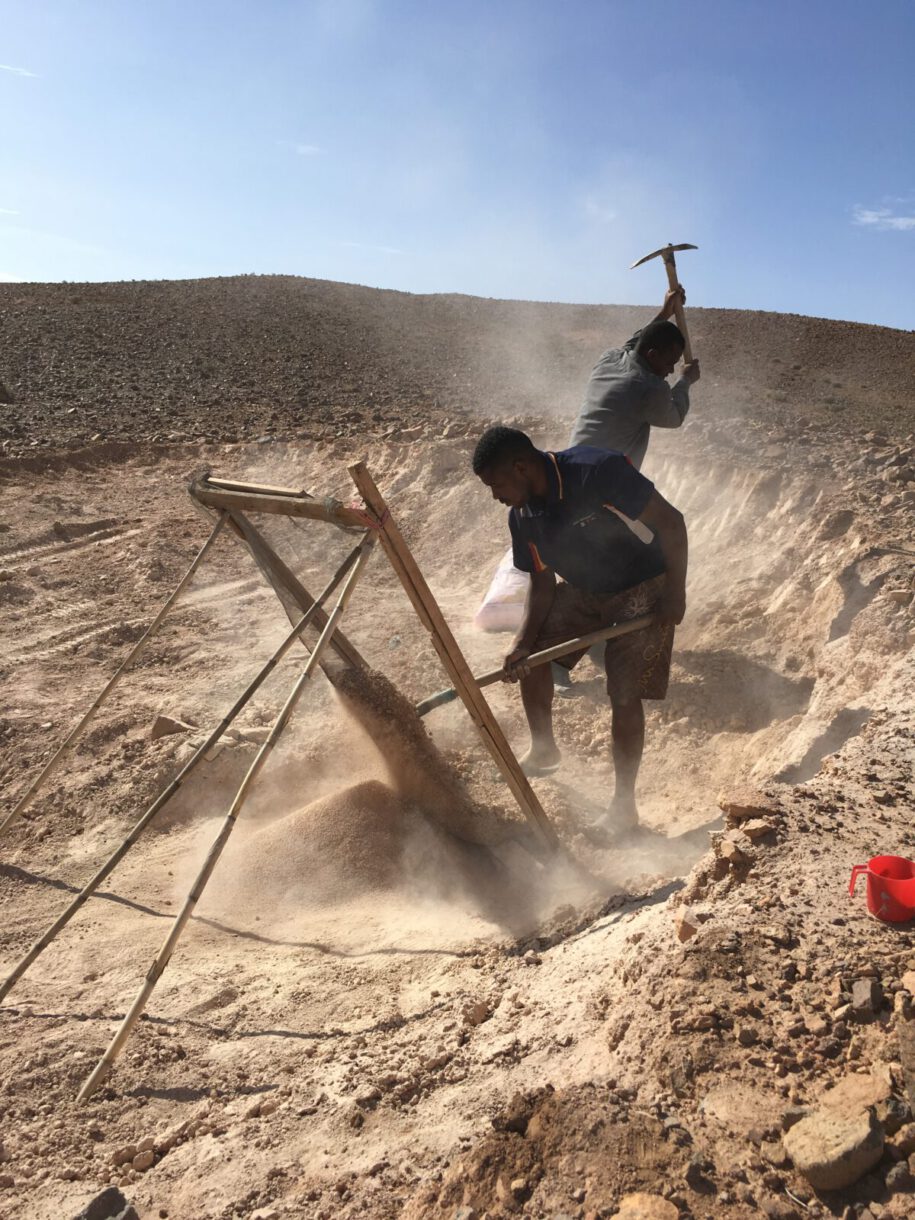
Collaborating with local crafts(wo)men
For the interior of the Women’s House, the collaboration with local craftswomen and craftsmen were key. Here again, local materials were put in the spotlight. The women designed and wove the curtains and helped with building the cob oven in the garden of the bakery. The doors and eucalyptus beams under the kitchen counter were made by local woodworkers. The exterior lamps and ceramic objects were shaped together with the local potter.
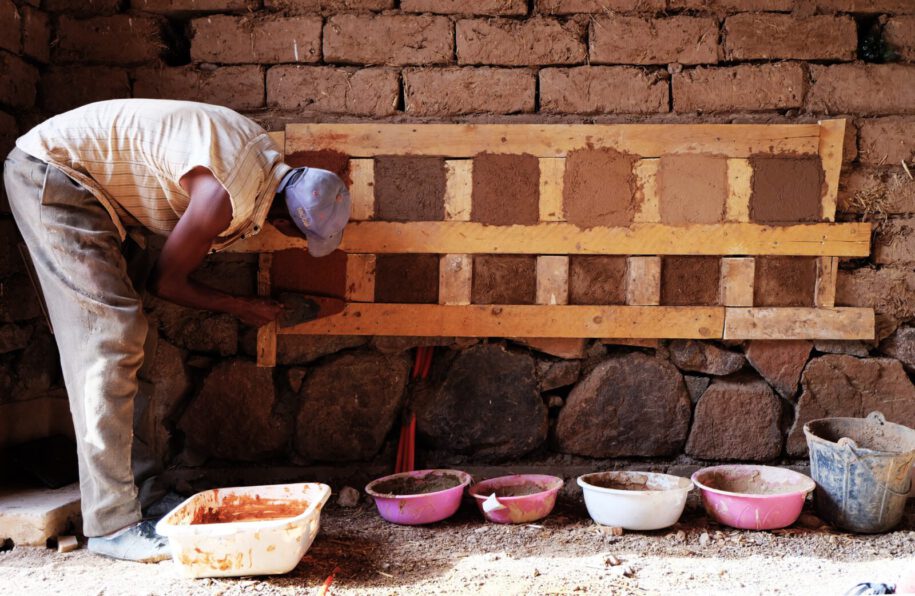
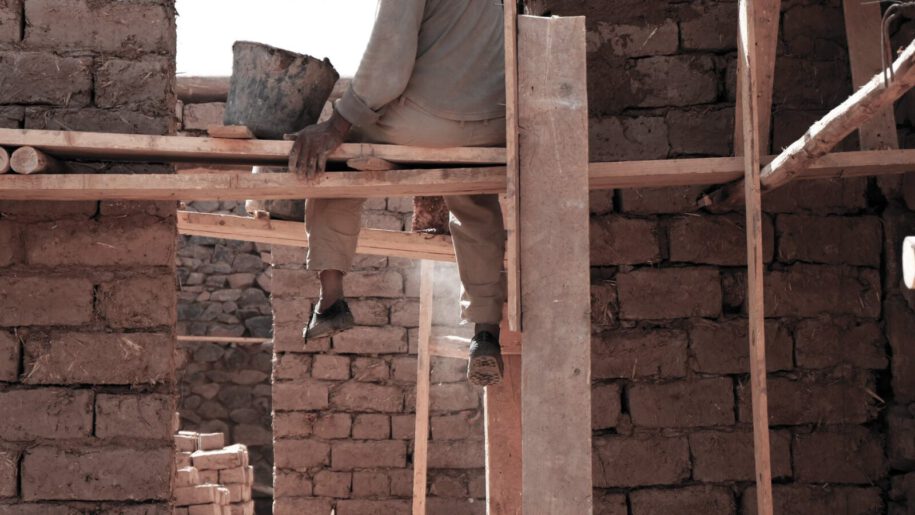
The forest garden
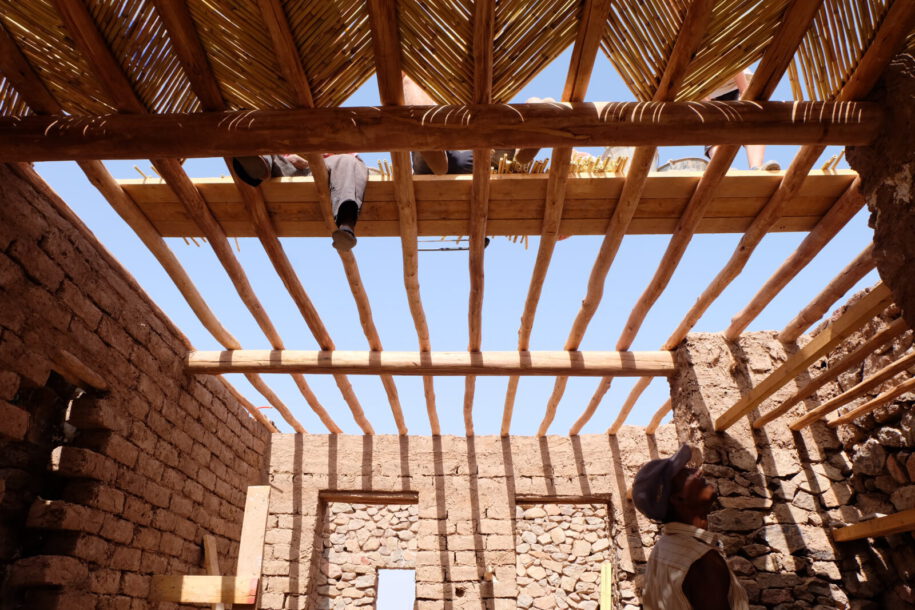
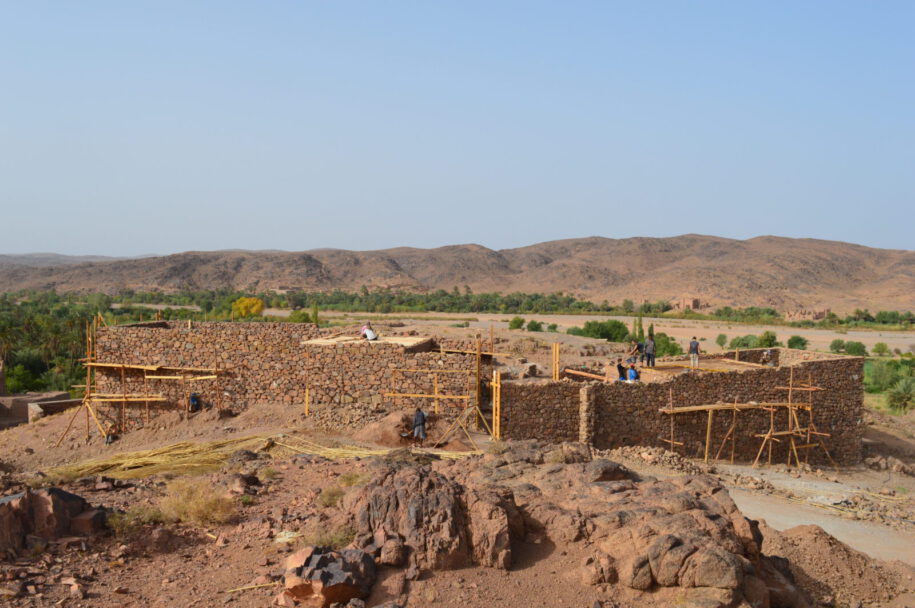
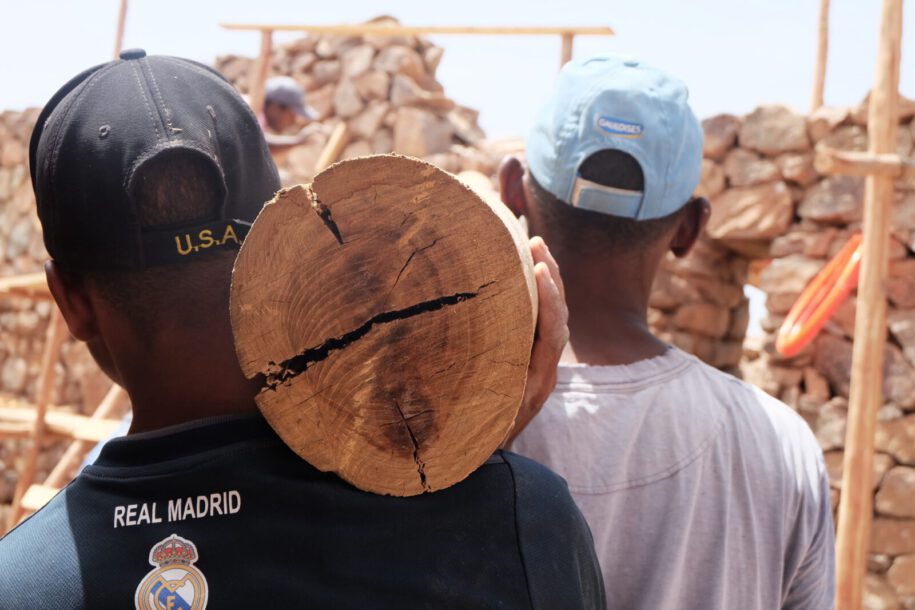
Next to the building, in the gully, a forest garden greens the formerly naked rocks. This garden brings biodiversity and shade to the hill site and aims to be a new public space for the village of Ouled Merzoug.
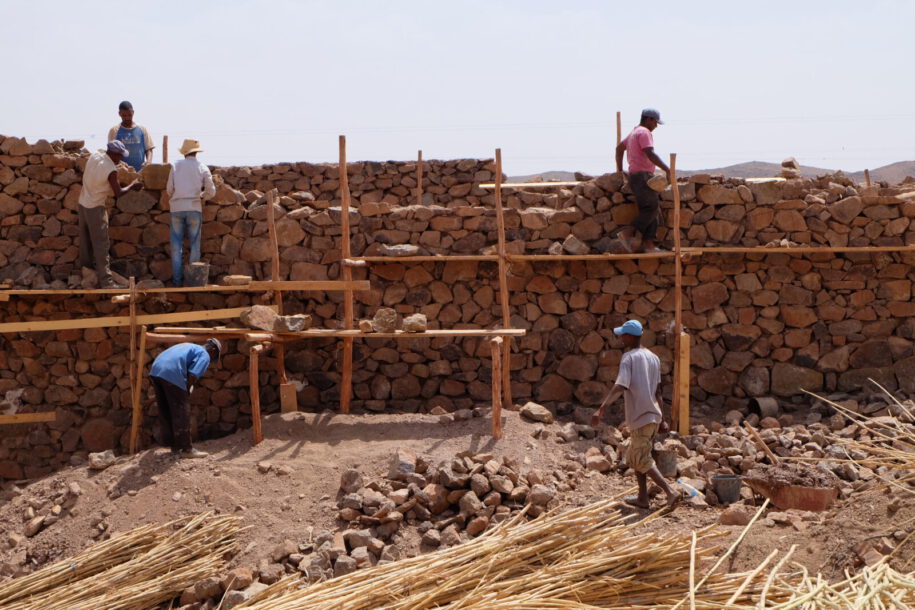
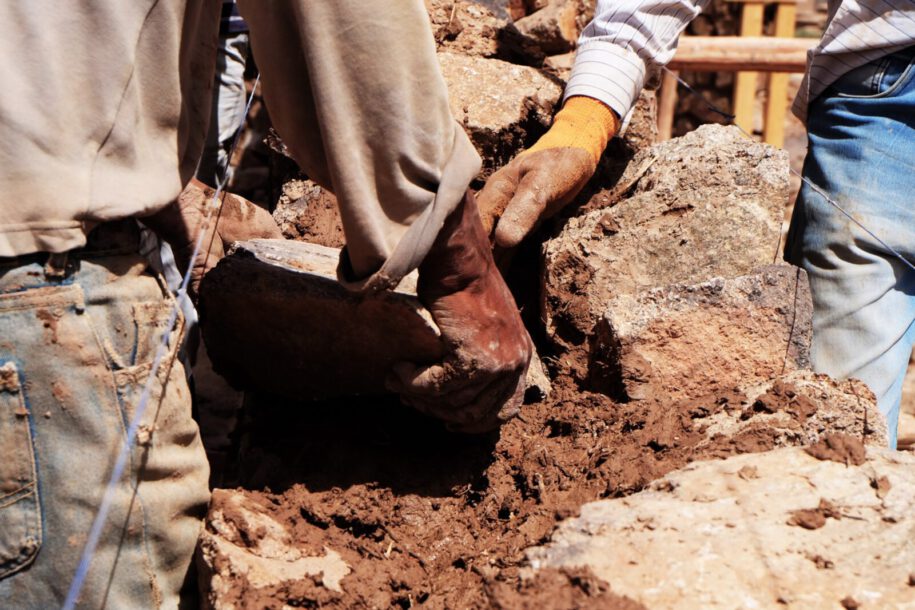
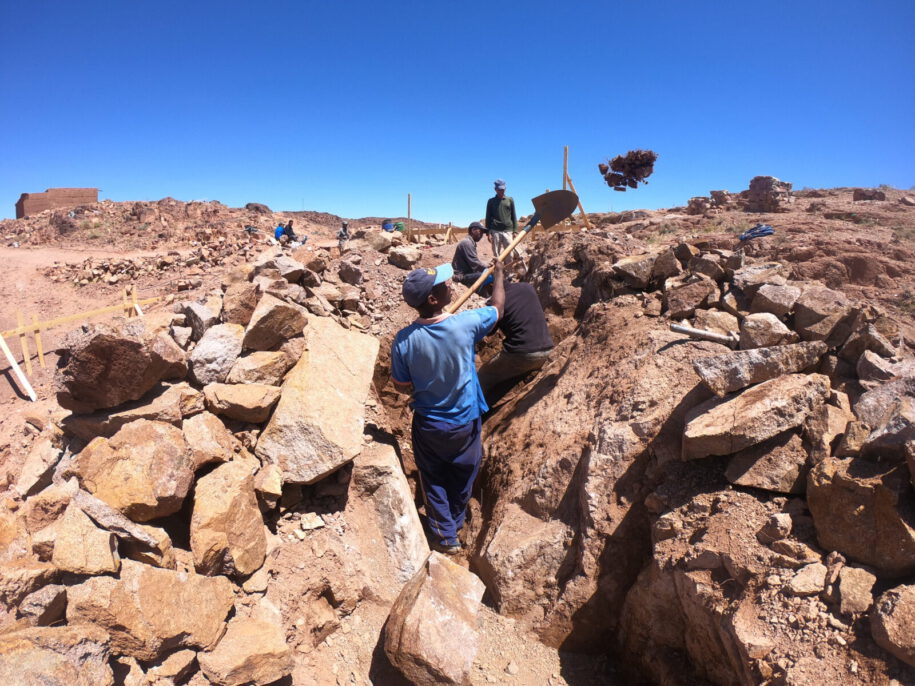
Next to that, the terraced garden and its dry stacked walls slow down the running of rainwater. This results in better water infiltration and a reduction of the amount of eroded material flushing towards the main road and further down the “Palmeraie”. The different species of native forest trees and shrubs were planted by the team of local workers, women of Ouled Merzoug and other villagers.
Drawings
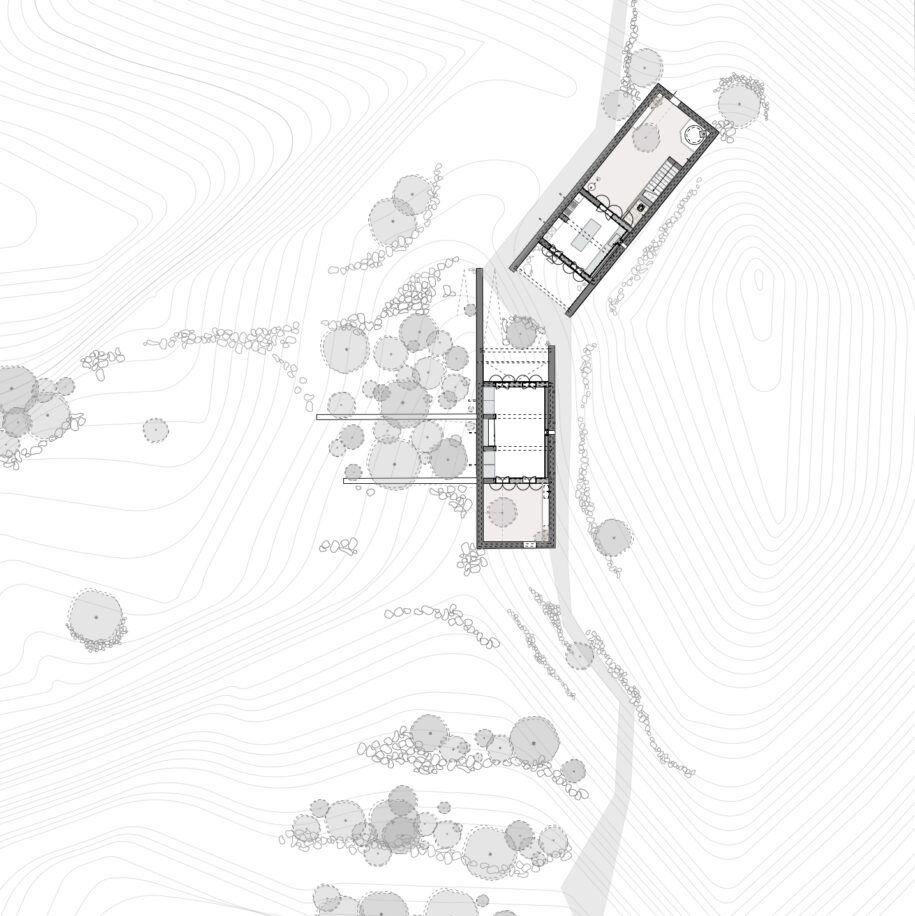
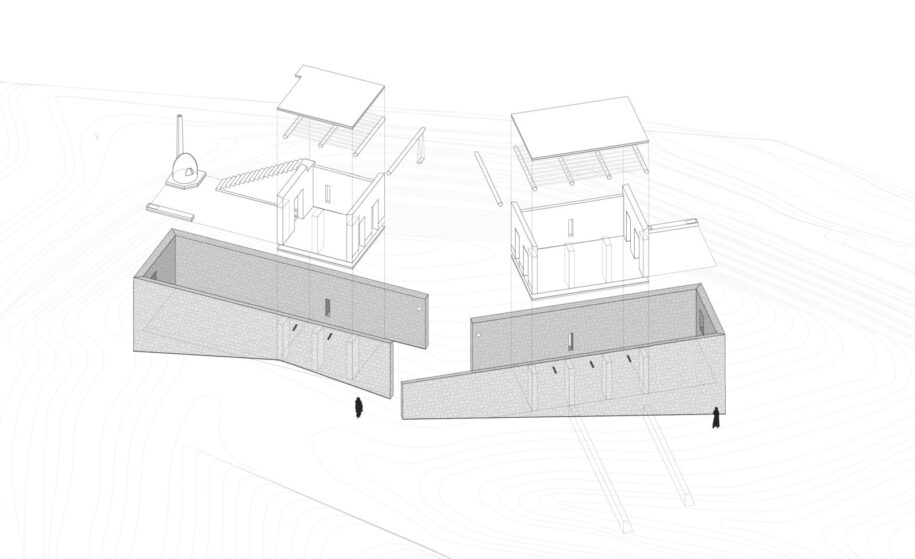
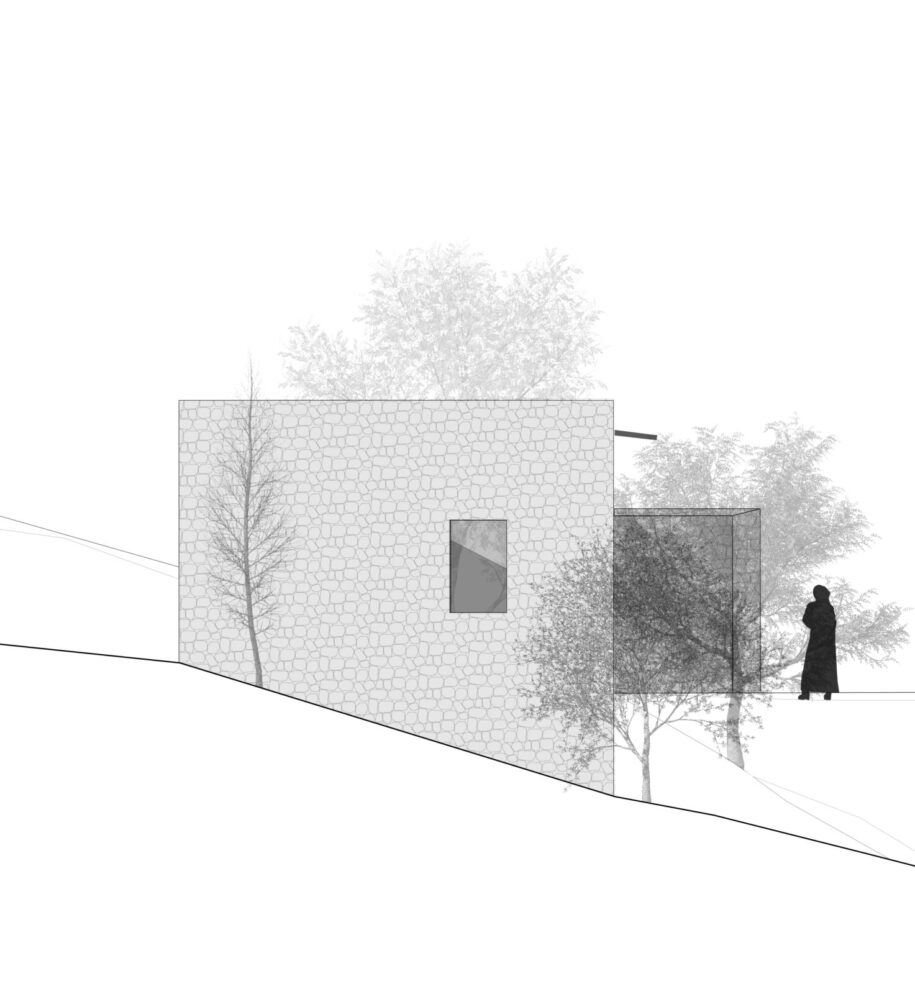
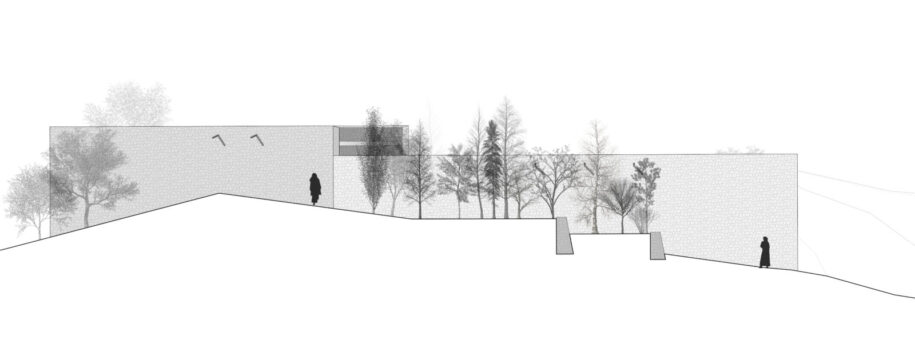

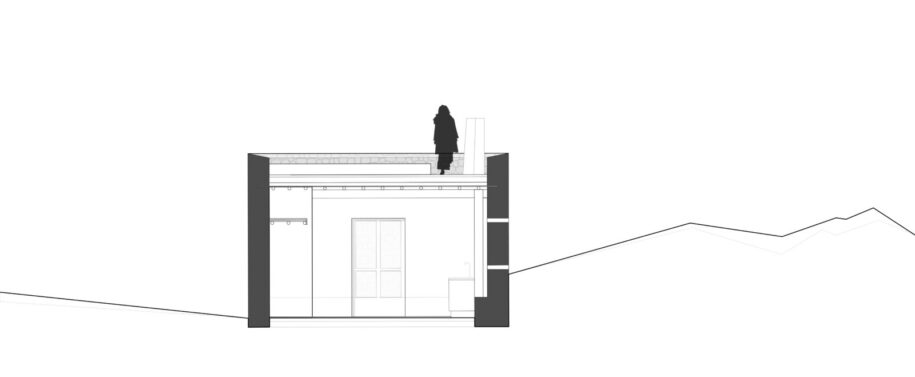
Facts & Credits
Project title Women’s House of Ouled Merzoug
Location Ouled Merzoug, Idelsane, Ouarzazate, Morocco
Built surface 130 m2
Outdoor space 270 m2
Year of completion 2019
Budget 32.200 euro
Client Women’s Association of Ouled Merzoug (Association des Femmes d’Ouled Merzoug (AFOM))
Project initiators and academic tutors Academic team of the UHasselt postgraduate certificate Building Beyond Borders and BC architects & studies
Design & build
Participants of Building Beyond Borders postgraduate certificate UHasselt, 2018-2019
John Silvertand, Hannah Van Breen, Arnaud Goossens, Auranne Leray, Margot Lambrechts, Eline Hoftiezer, Tinne Beirinckx, Kjell Keymolen, Aurora Fanti, Sofie Van den Velde, Jolien Bosmans, Martina Petrosino, Giulia Ventre, Emily Haest, Miki Z, Biniam Hailu, Alice Chang, Dany Depuydt
Team of local workers
Abdelaziz Agoram, Mohamed Oualla, Abdelhadi Arifi, Abdelkbir Sayah, Bouchaib Darai, Hassiz Kassimi, Abde Sadak Agoram, Mehdi El Finti, Allal El Finti, Abdelkarim Kassimi, Abdelwahid El Finti, Rachid Esmali and women of AFOM
Fund Women’s House of Ouled Merzoug, here!
READ ALSO: Huidekoperstraat 13-15, 17 residential development in Amsterdam | Studio Hartzema

